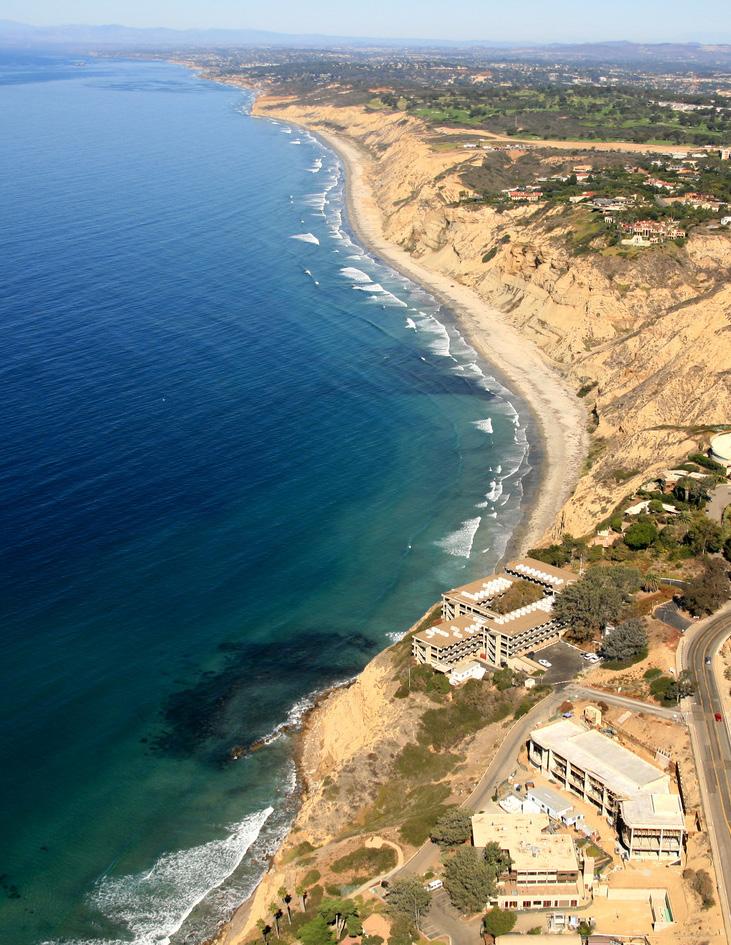

State
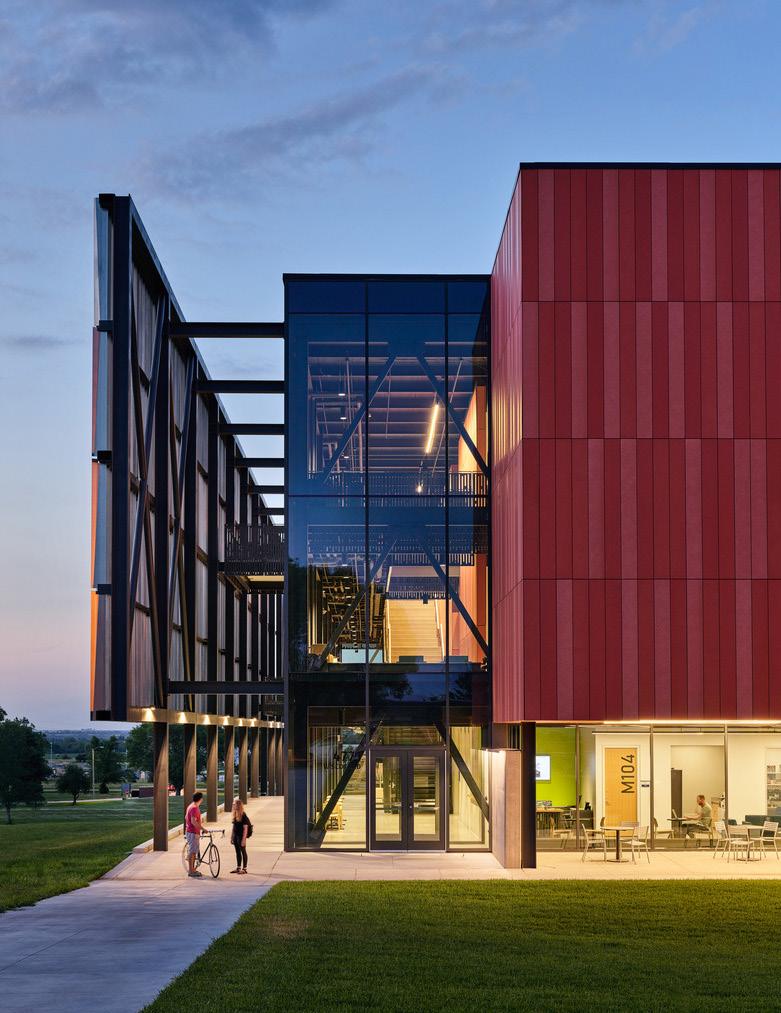
Southeast Community College, Academic Excellence Center | Beatrice, NE
Cover Image: NOAA Southwest Fisheries Science Center (LEED Gold) | La Jolla, CA
Our work toward an equitable and carbon-free future.
Dear Reader,
Our State of Sustainability Report reflects Multistudio’s ongoing dedication in climate-positive design. Since our evolution from Gould Evans, we have transformed our sustainability approach, focusing on three core goals identified at an internal sustainability summit in 2018:
1. Pathway to Net Zero Energy
2. Red List Free Healthy Materials
3. Post-Occupancy Evaluations
This report reflects our work through 2023 towards holistic design strategies and tools to make progress toward those ideals while accelerating our efforts to adapt to the rapidly changing world we inhabit.
Our evolving design approach aligns with the AIA 2030 Commitment and integrates the AIA Framework for Design Excellence into our practice. Responding to the increasingly volatile energy costs, extreme weather, and public health challenges, we’ve expanded our focus from net-zero energy to net-zero carbon (operational and embodied), water, and waste. The 2019 global pandemic brought designing for health and well-being to the forefront, with a focus on human connection and nature through better indoor air quality, daylighting, and biophilic design. We advance our work through research that evaluates building performance and its impact on the community. These holistic design approaches and processes aim to foster more equitable and resilient communities.
This report also includes our first year of carbon accounting and offsets, underscoring our operational ethos of walking the talk, fostering curiosity through continuing education and highlights our advocacy and dedication for our communities.
Together with the Multistudio Sustainability Committee, we invite you to spend time with our report, offer feedback, and join our efforts. With rigor and courage, together we can imagine and construct a climate positive future.
Sincerely,

Teresa Jan Director of Climate Positive Design

Betsy Lynch Sustainability Strategist
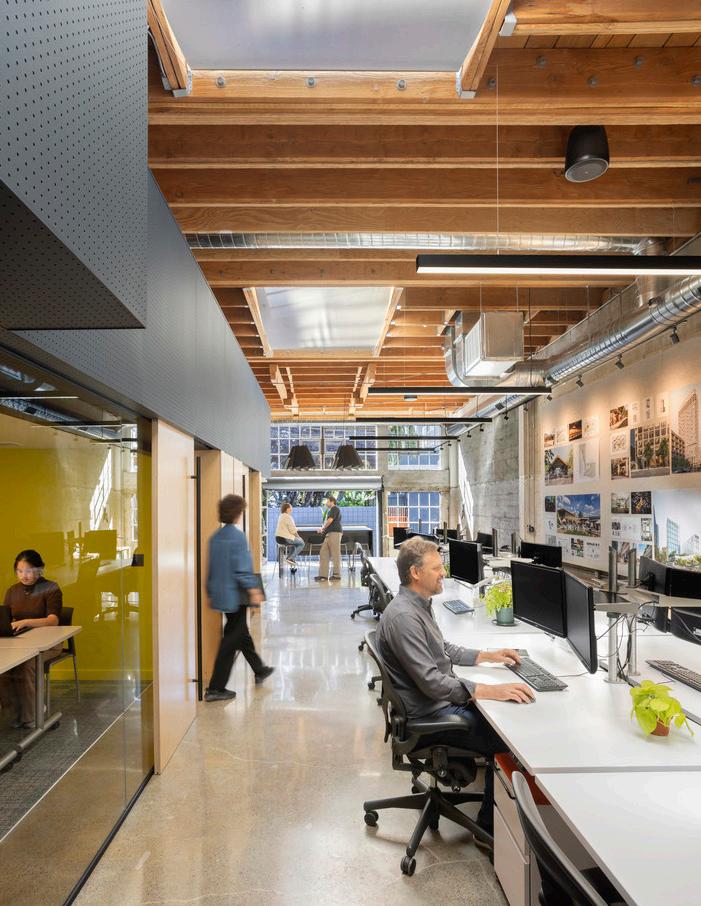
Multistudio | San Francisco, CA
We prioritize a climate-responsive, place-based, people-centered design philosophy to sustainability.
San
Francisco, California
Since its founding in 1974, Multistudio (formerly Gould Evans) has blossomed from a humble vision of two University of Kansas classmates into a socially-engaged design collective pushing the boundaries of service-based practice. Diversity of thought, people, and practice areas enables us to explore place and spark economic, social, and environmental change.
Our studios’ communities reside across coastal, desert, and prairie landscape across the US. Over the years we have developed a unique approach to sustainability rooted in our 5 diverse regions across 4 climate zones.

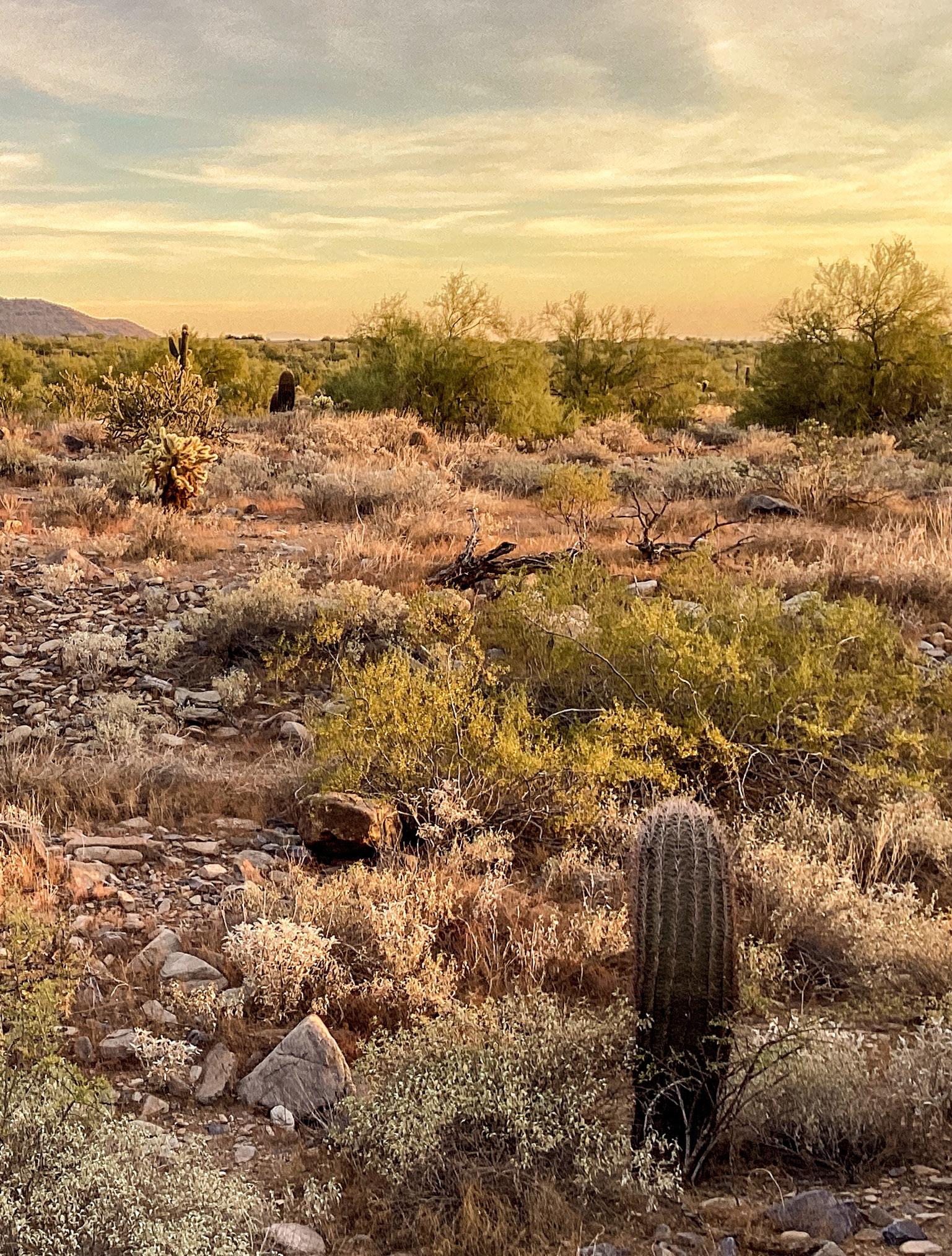
Phoenix, Arizona
Climate Zone 3C, Warm Marine
Climate Zone 2B, Hot and Dry
Kansas City, Missouri
and Lawrence, Kansas


New Orleans, Louisiana
Climate Zone 4A, Mixed Humid
Climate Zone 2A, Hot and Humid
Multidisciplinary perspectives that drive decarbonization, equity, and climate justice.
We integrate multidisciplinary design strategies and operational commitments to reduce carbon emissions. With a resilient perspective, our team creates measurable solutions that promote social equity, economic mobility, and climate justice through decarbonization.
AIA 2030 Commitment
As a signatory firm of the American Institute of Architects (AIA) 2030 Commitment, our team has reported building data for the past eight years, and over time, we have made measurable progress. In 2023, the portion (gross square footage) of our portfolio that reported energy modeling was 98.5%—an increase of 29.5% compared to reporting conducted in 2018. The reported projects’ total square footage has increased from 2,670,000 sq ft to 4,120,000 sq ft. These indicate a design culture shift to integrating energy modeling during our design process and increasing participation in 2030 Commitment reporting.
Multistudio Internal Reporting Protocol
In 2022, Multistudio began kicking off all projects with an AIA Framework for Design Excellence charrette (pictured below) and required all teams to use the AIA Common App as a living document along with a Multistudio “Project Performance Data” (PPD) spreadsheet. The PPD helps project teams to set goals, tracking water use reduction, healthy materials, energy, embodied and operational carbon. Together, the two required worksheets for Multistudio’s internal 2030 Commitment reporting guide all project teams to story-tell the impacts of projects holistically with a qualitative narrative and quantitative data.
The New Tradition
Every project team that submits both the Common App and the Project Performance Data (PPD) spreadsheet are automatically entered into the competition for Multistudio’s 2030 Commitment Champion. At our quarterly firmwide information sharing sessions, the Sustainability Committee reports the 2030 Commitment results and hosts an award ceremony that recognizes project teams’ exceptional efforts. The New Orleans studio was the first to complete 2030 reporting and used the prize winnings to purchase an indoor air quality monitor.
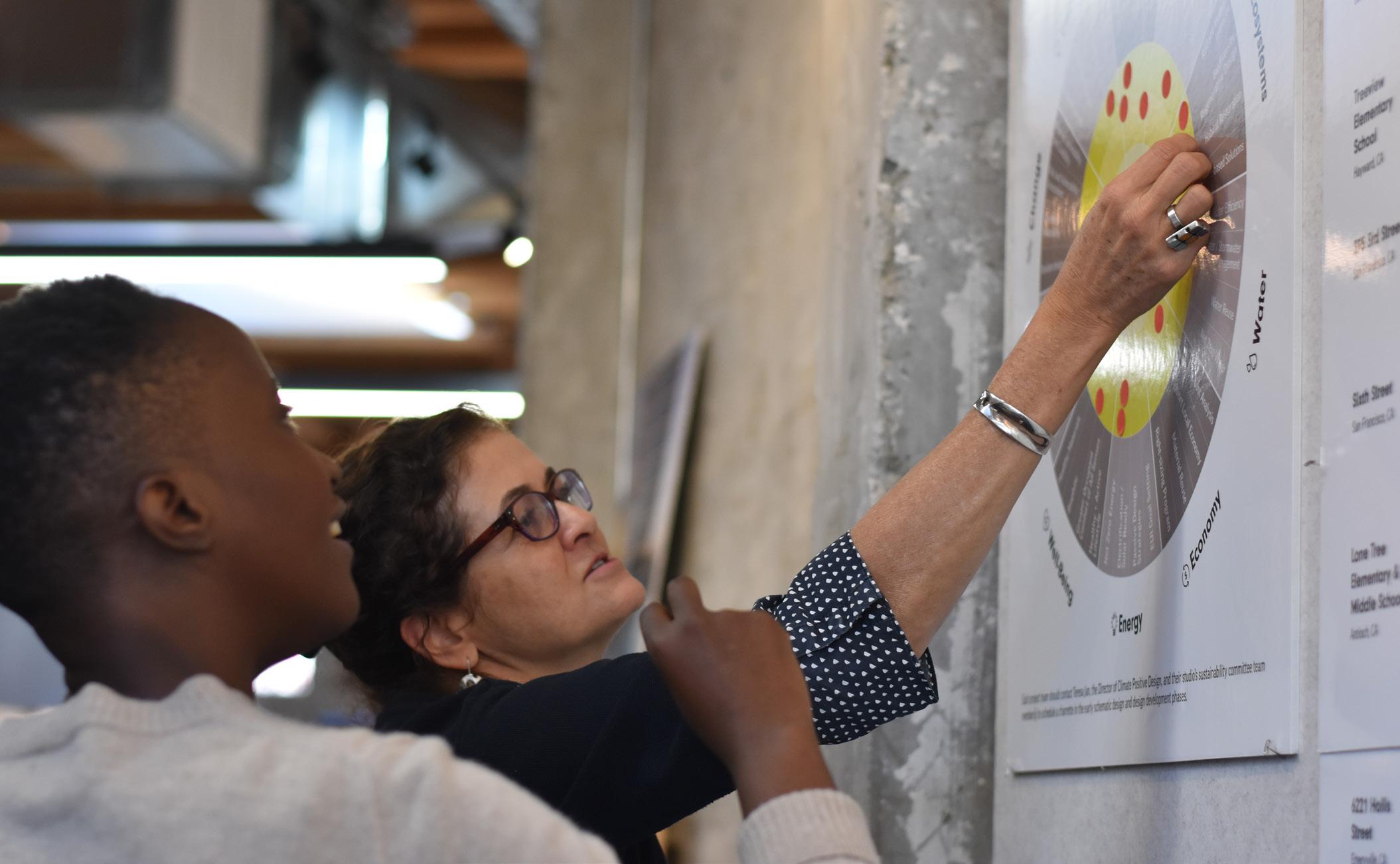
Multistudio Sustainability
At A Glance
Sustainable building certifications, full electrification, and post-occupancy evaluations are vital pathways to strengthening building decarbonization. Together with performance verifications during and after construction, these efforts emphasize inclusivity while promoting the health, wellness, and resilience of the community.
3* LEED 35*
Fortified
Net-Zero Ready 4
Collaborative for High Performance Schools (CHPS) 4*
*Certified and pursuing certification
National Green Building Standards (NGBS) 4*
Fitwel 1*
All-Electric 11
7
Post-Occupancy Evaluations
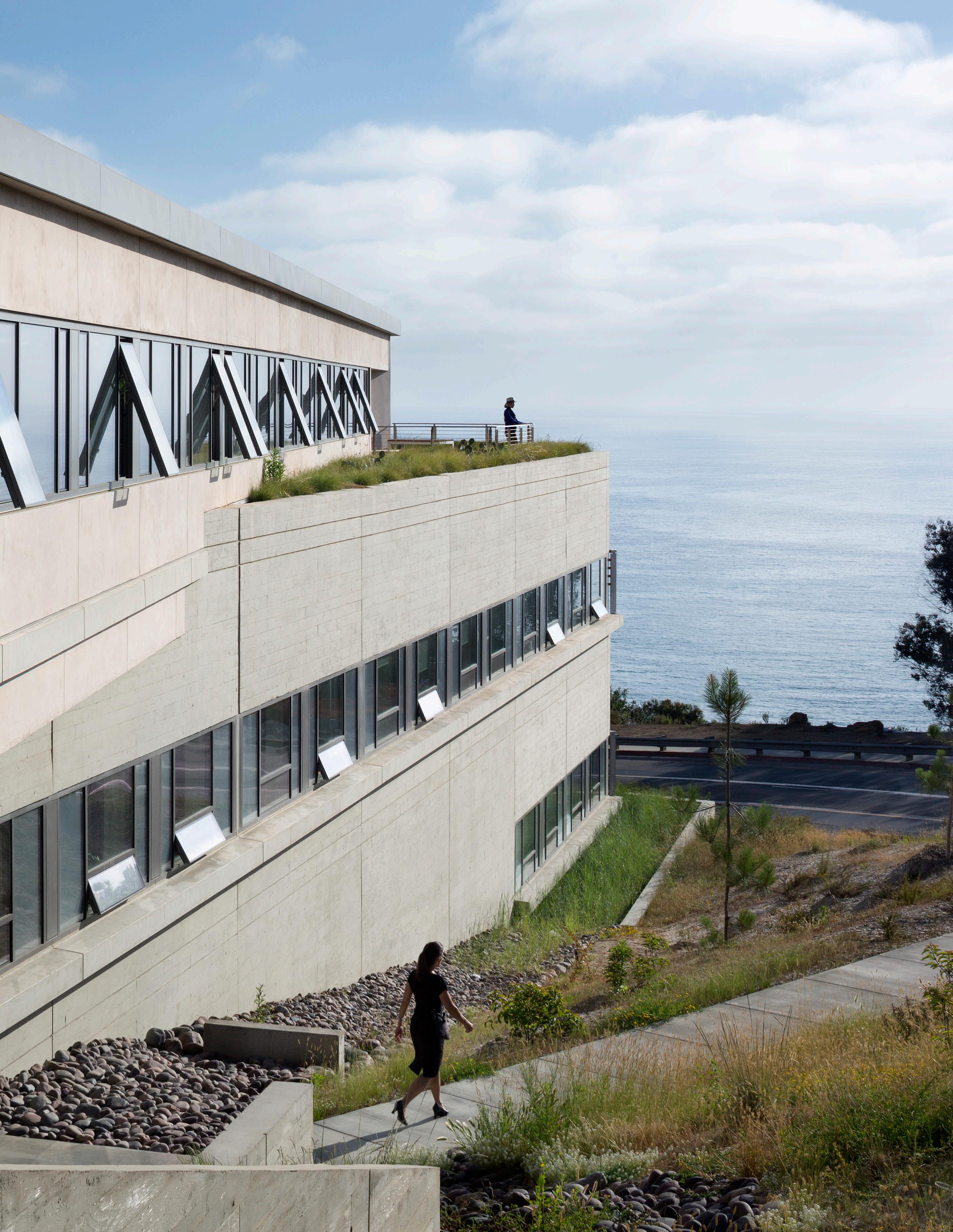
NOAA Southwest Fisheries Science Center (LEED Gold) | La Jolla, CA
Building Performance Portfolio 2023
Energy Portfolio 2023
Energy reduction directly impacts climate change mitigation, environmental restoration, energy security, and economic benefits.
Multistudio aims to achieve a zerocarbon future through lower energy consumption, transitioning away from fossil fuels and combining offset electrical usage with renewable energy sources.
Ocean View Elementary | Albany, CA
A Net Zero Ready School
Ocean View Elementary school is an all-electric and net zero ready campus with no site emissions. With the school district and community’s support for safety and public health, the existing underground plastic gas line was removed and capped at the main to mitigate the risk of gas leakage.
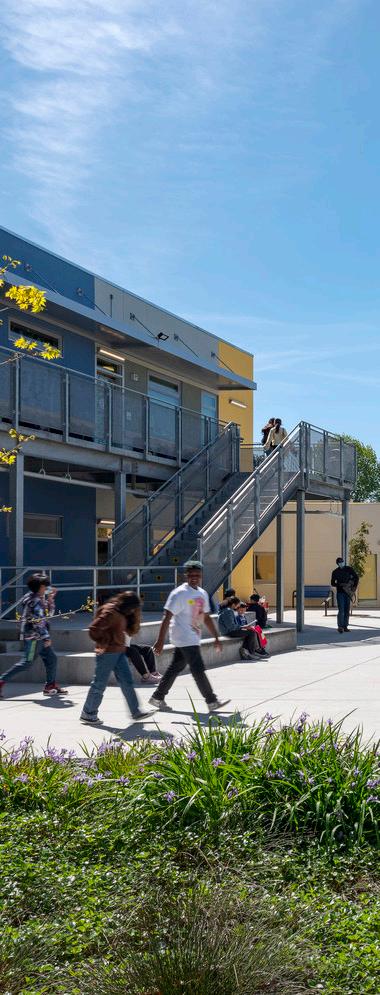
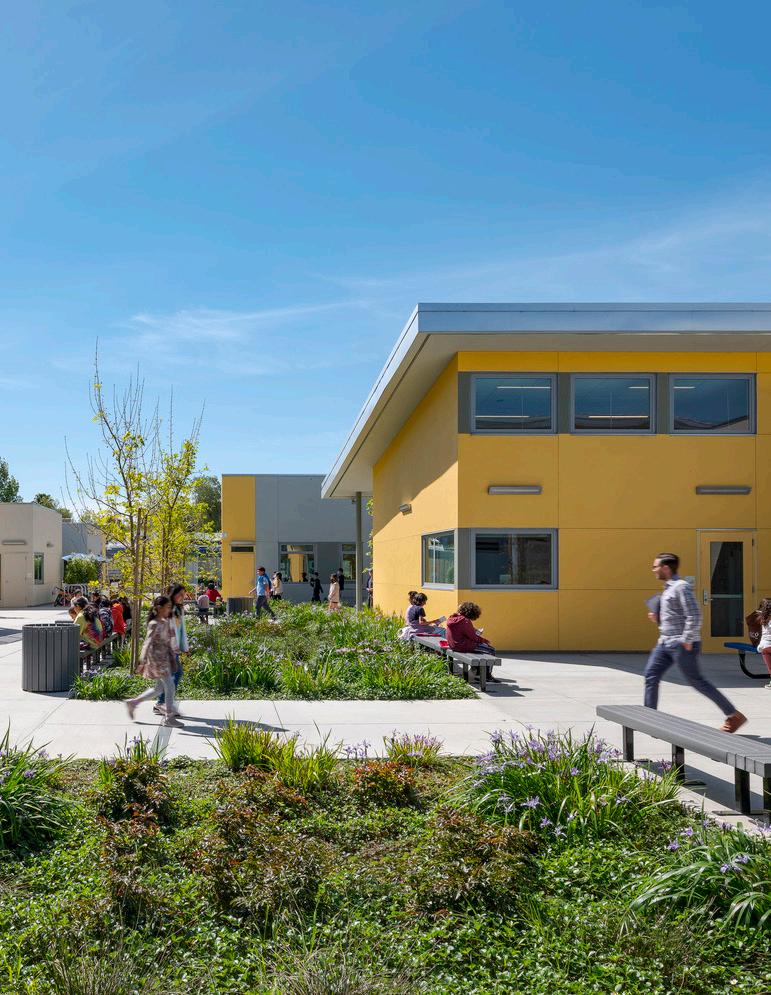
Portfolio / Energy, Operational Carbon
In comparing the reported results of 2022 and 2023, the percentage of our portfolio (gross square footage) undergoing energy modeling increased significantly from 70.6% to 98.5%.
Performance:
When comparing the reported results from 2022 to those of 2023, we see significant improvements in energy efficiency measures. The average Energy Use Intensity (EUI) reduction increased from 40.8% in 2022 to 51.6% in 2023. Additionally, the reduction in Lighting Power Density (LPD) doubled, rising from 28.1% to 57.5%. The predicted average EUI reduction for 2023 has reached 51.6%, marking the highest reduction recorded by Multistudio, and demonstrating a strong recovery from the lower reductions observed in 2022.
Over the years, the overall reported reductions in LPD have fluctuated between 20% and 50%. However, this year, thanks to the widespread adoption of LED lighting technologies, enhanced lighting controls, and effective communication with electric consultants, the reduction percentage has achieved a new high of 57.6%.
Furthermore, the average EUI reduction for projects currently under construction is 52%, many of which were designed years ago. In contrast, projects still in the design phase at the end of 2023 have an average EUI reduction of 57%. This trend suggests that we can expect even more substantial improvements in EUI reductions in the coming years as we continue to conduct early design charrettes, coordinate our efforts intentionally, and provide necessary resources and support.
Energy Modeling by Area by Gross Square Footage of Projects
Multistudio
Opportunities:
• Prioritizing passive design measures like solar orientation and continuous insulated building envelopes is the key to reducing energy consumption. Tight envelopes function like a thermos to keep air cool and warm as needed. High-quality buildings with adaptable designs can last 50-100 years, while the lifespan of building systems averages about 20-30 years.
• Building electrification is the quickest pathway to meet a project’s decarbonization goals, as utility companies in all our practice regions are committed to providing 100% clean energy by 2050. For the 2023 reporting period, there were nine all-electric new construction projects and one new all-electric commercial kitchen renovation. All-electric buildings also help minimize on-site gas-related air pollution, such as CO and NOx, which is harmful, particularly to young children and those with respiratory health issues.
• On-site renewable energy is often essential to meet energy and carbon reduction goals of 80% or more. Designing buildings and roofs to be “solar-ready” is an important first step toward achieving net-zero energy and operational carbon reductions. This approach prepares the site for future installation of renewable energy systems once funding is secured through sustainable incentives, fundraising, bonds, or power purchase agreements.
• Equitable decarbonization is a key strategy for addressing environmental justice and reducing burdens on the most vulnerable populations. Prioritizing net-zero operational energy and carbon design for community resources such as PK-12 education facilities, affordable housing, and other essential social infrastructure ensures a more sustainable, resilient and just future for all.
Predicted Energy Use Intensity (EUI) Reduction
Energy Use Intensity (EUI)
GSF of Projects)
AIA 2030 target for 2023
Predicted Lighting Power Density (LPD) Reduction
Lighting Power Density (LPD)
for 2023
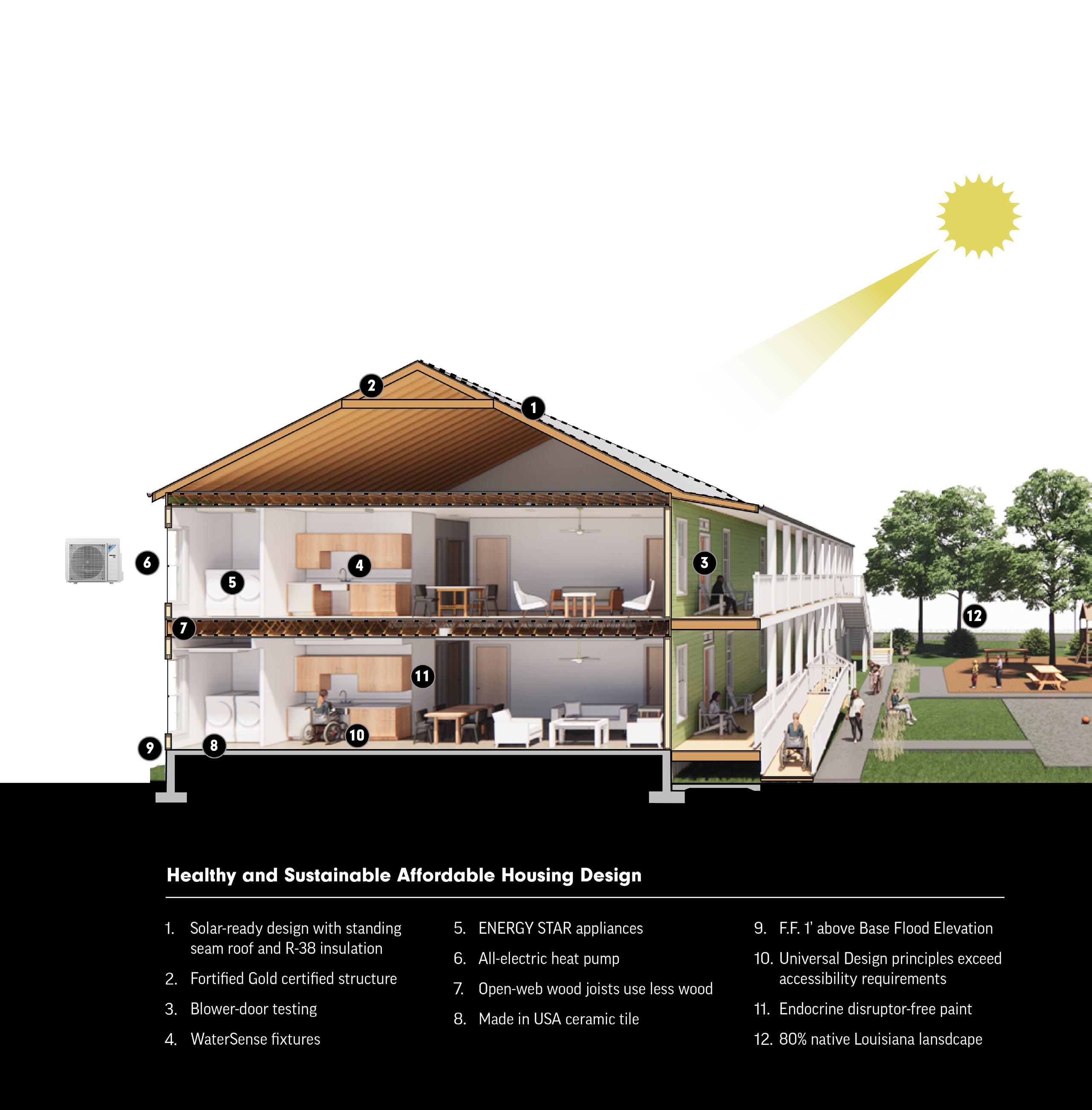
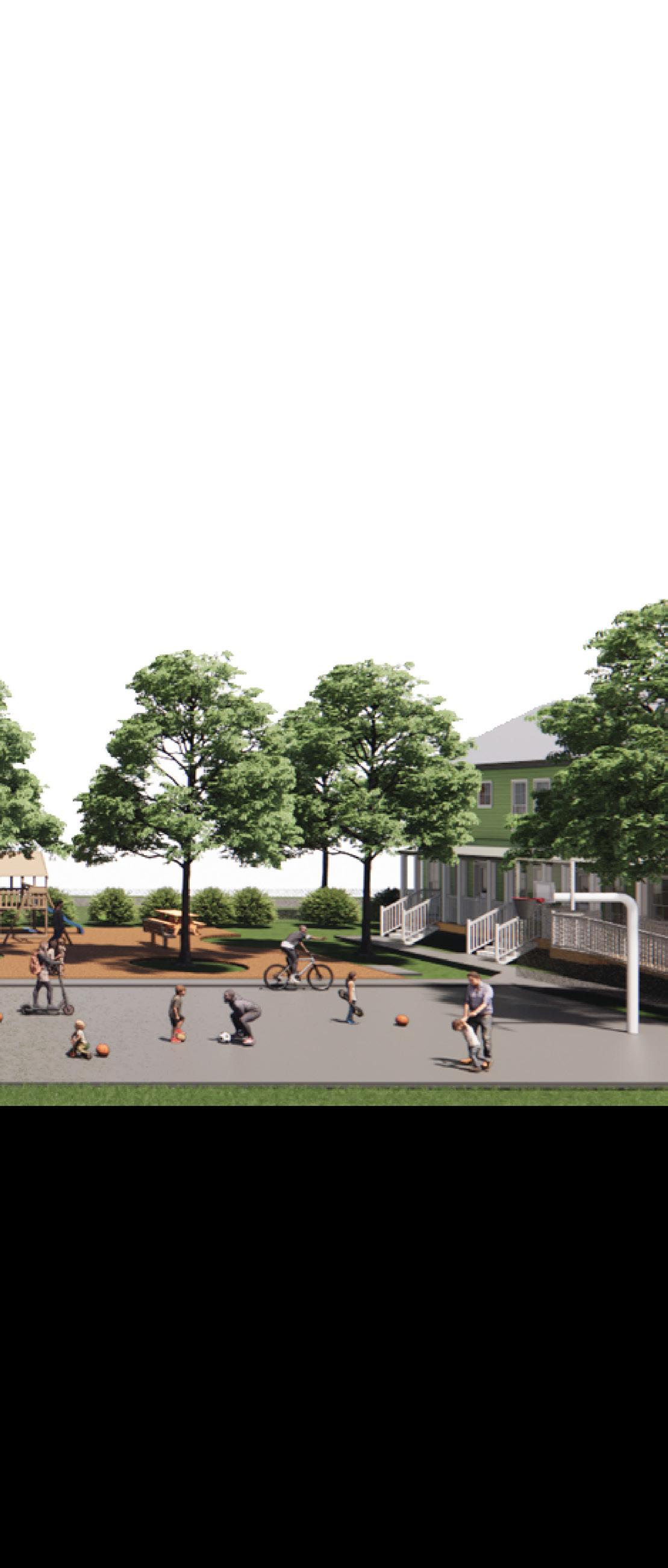
Equitable Decarbonization for Resilient Communities
Phoenix Square Affordable Housing | New Orleans, LA
National Green Building Standard Bronze certifiable Fortified Multifamily Gold certifiable Enterprise Green Communities certifiable
The Phoenix Square Affordable Housing development in New Orleans is designed to be all-electric and solar ready. It utilizes IRA 45L/ ENERGY STAR certification to elevate both the energy efficiency and quality of housing.
The equitable electrification movement is evident in New Orleans where there is a heavy focus on design resilience. Electrification project types range from affordable housing and health care to community stadiums that provide valuable assets to disadvantaged communities as the local electrical grid moves to become carbon-free by 2050.
Portfolio / Energy, Operational Carbon
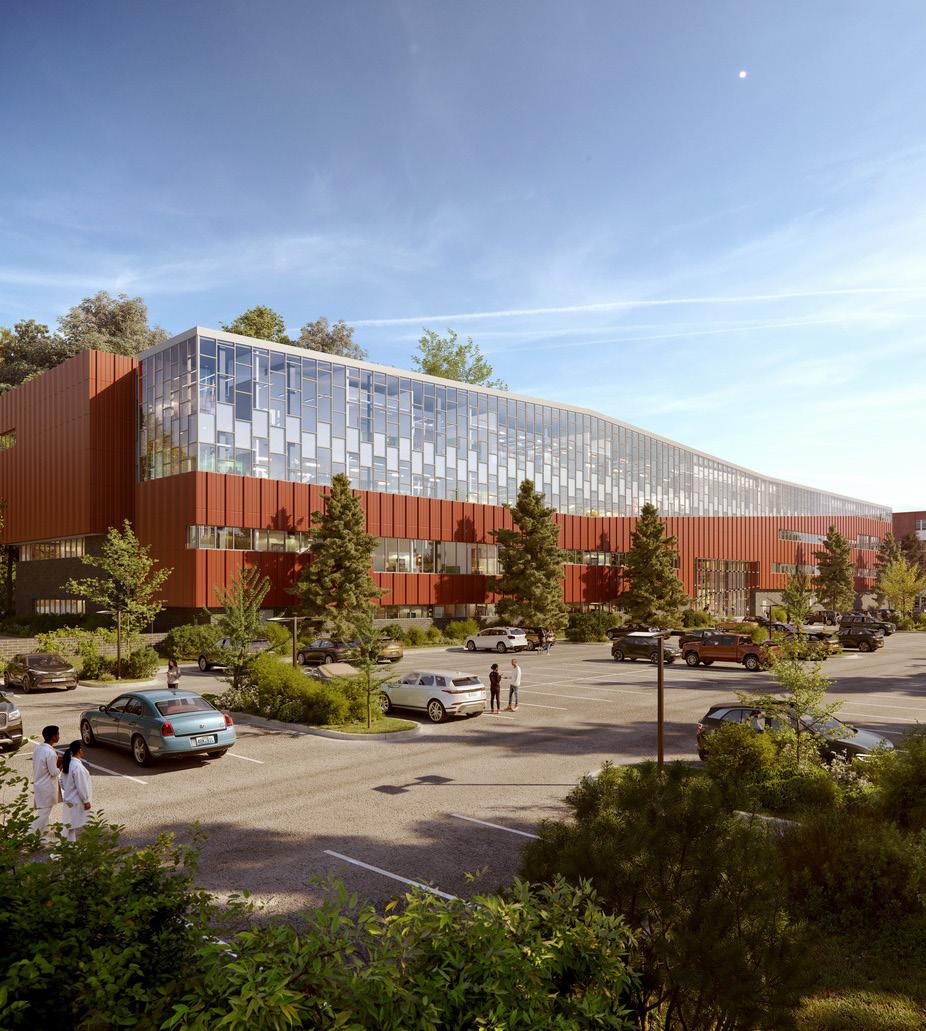
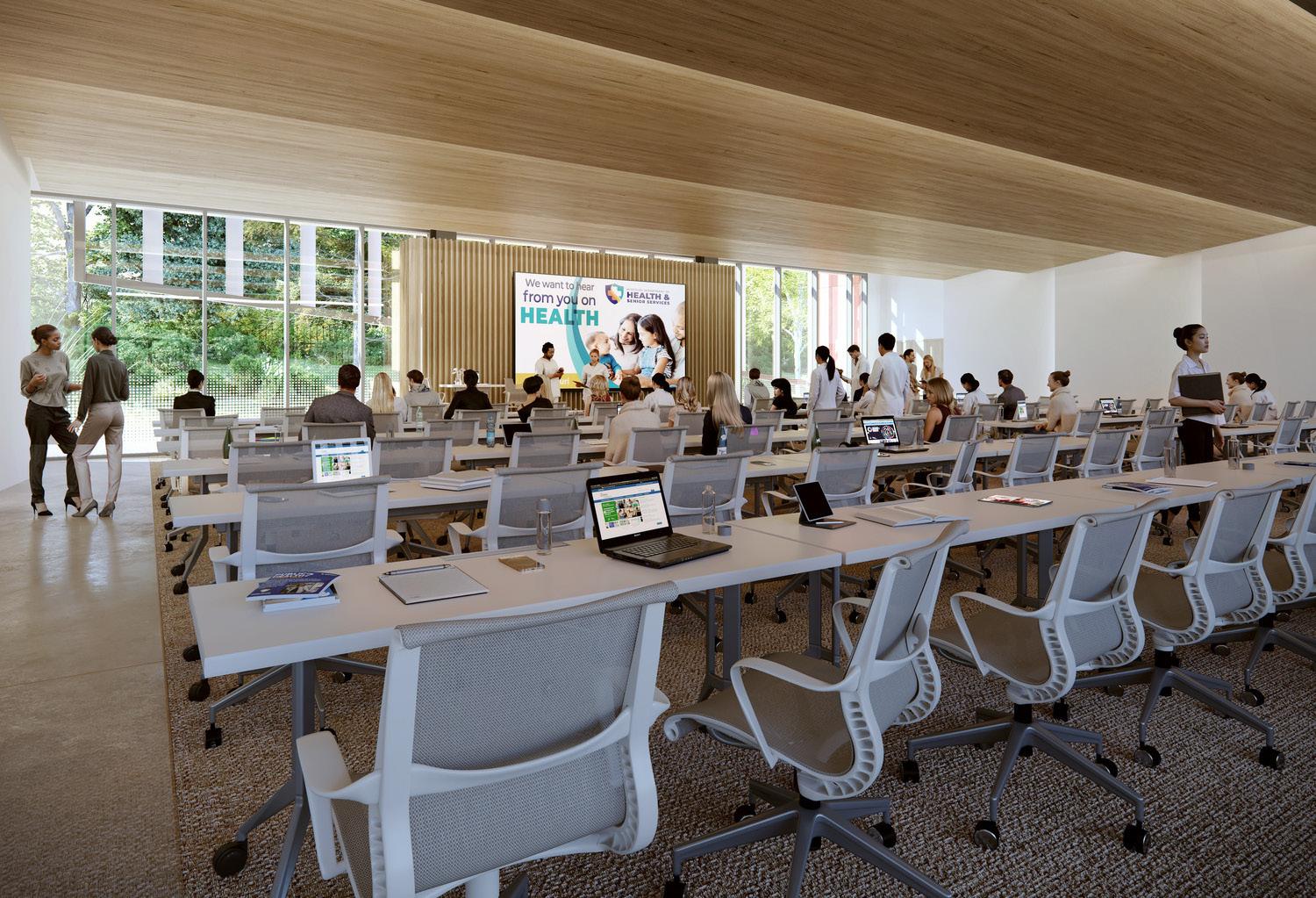
Energy Efficiency for Public Health Services
State of Missouri Lab | Jefferson, MO
The State of Missouri Jefferson City Lab campus is a facility that brings all health and biology-related endeavors undertaken by various agencies under one roof. To support the design goals of resilience, flexibility, and wellness, the building performance meets a 65% energy reduction compared to the baseline. The proposed design utilizes a well-insulated building envelope, AHUs with glycol exhaust energy recovery coils, airside economizers, and a heat shift chiller that can simultaneously transfer energy between the heating and cooling water loops. The project reduces fossil fuel usage by 55% by decreasing significant heat demand.
Drought, groundwater depletion, and overburden on the historic combined water sewer system are prevalent in our practice regions and pose resiliency risks to our clients’ operations.
Both in our studio and our projects, we are actively working toward indoor and outdoor water use reduction, increased permeability to recharge aquifers, and water reuse.
American Royal | Kansas City, KS Restorative Landscaping
American Royal, a 47-acre complex of indoor and outdoor arenas, exposition barns, and a museum celebrating food and agriculture, is constructed to have a minimum of 250,000 solar-ready roofs.
By designing 87% of the landscape with native species, American Royal achieved a 98.4% reduction in potable outdoor water use.

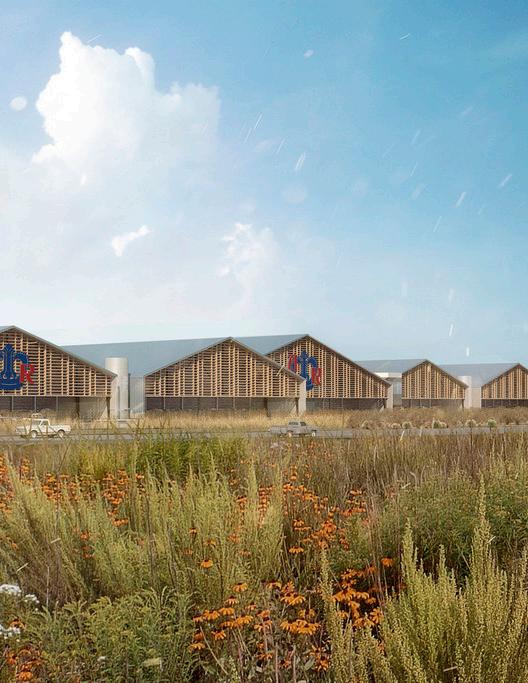
Portfolio / Water
“We believe in a water-energy nexus: if we save water usage, we save energy and reduce carbon emissions of processing, treating, and transporting potable water.”
Performance:
Multistudio began tracking water reduction of projects firmwide in 2022. Reporting of both 2022 and 2023 shows an increase of outdoor water use reduction from 73.9% to 76.4%. Indoor water use reduction, calculated by two different methods in 2022 and 2023, hovers around an 1820% reduction. Indoor water use reduction will be our focus in the upcoming year.
Opportunities:
• It is important to set water use intensity budget/goals and create water-saving strategies early. Multistudio’s 2023 PPD indoor water-saving calculator prompts the maximum flow and flush of fixtures to assist the design team, plumbing engineers, kitchen consultants, and the client in water reduction strategies. Low flow and flush rate plumbing fixtures with more water efficiency than 1.28 gpf toilets 1.8gpm shower and 1.5gpm lavatory, are readily available on the market; some of these fixtures do not cost more and provide quick return of investment (ROI) within one to two years.
• Collaboration with landscape architects to specify drought-resistant native plants for outdoor space can provide benefits can save water and increase biodiversity. Drip irrigations or capillary irrigation systems provide water directly to the roots, while the moisture content helps the soil to store more organic matter and increase carbon sequestration.
• On-site water reuse can ease the burden on municipal water systems while enhancing resilience at the district level.
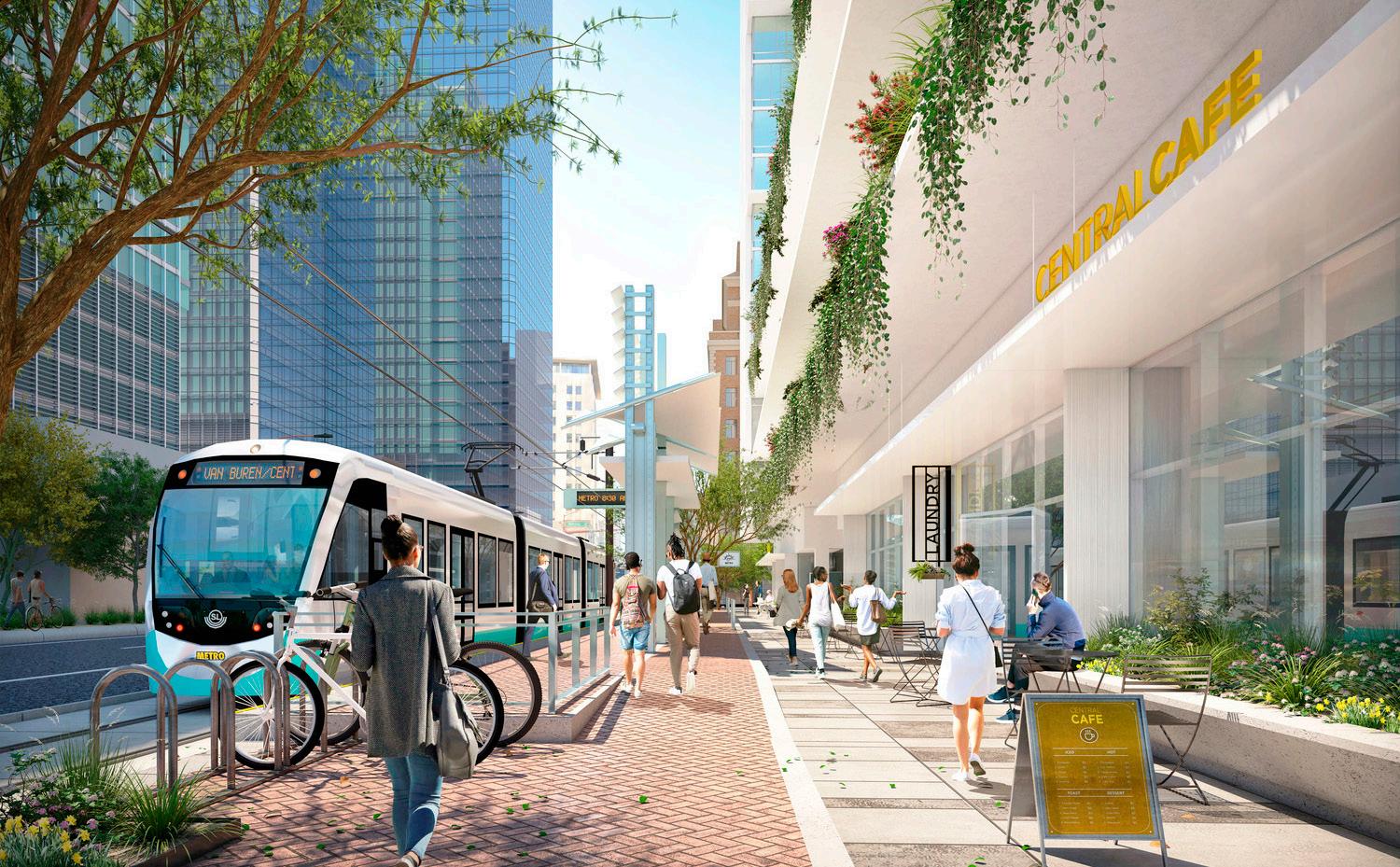
The 792 units at Central Station Redevelopment, a twotower, 1,000,000 sq ft mixed-use, multi-modal project in
Phoenix, are designed with 1.1 gpf residential toilets, 1.75 gpm shower, and 1.5 kitchen facets to reduce 30% of indoor potable water use.
Central Station | Phoenix, AZ LEED Gold
Fitwel Certifiable
downtown
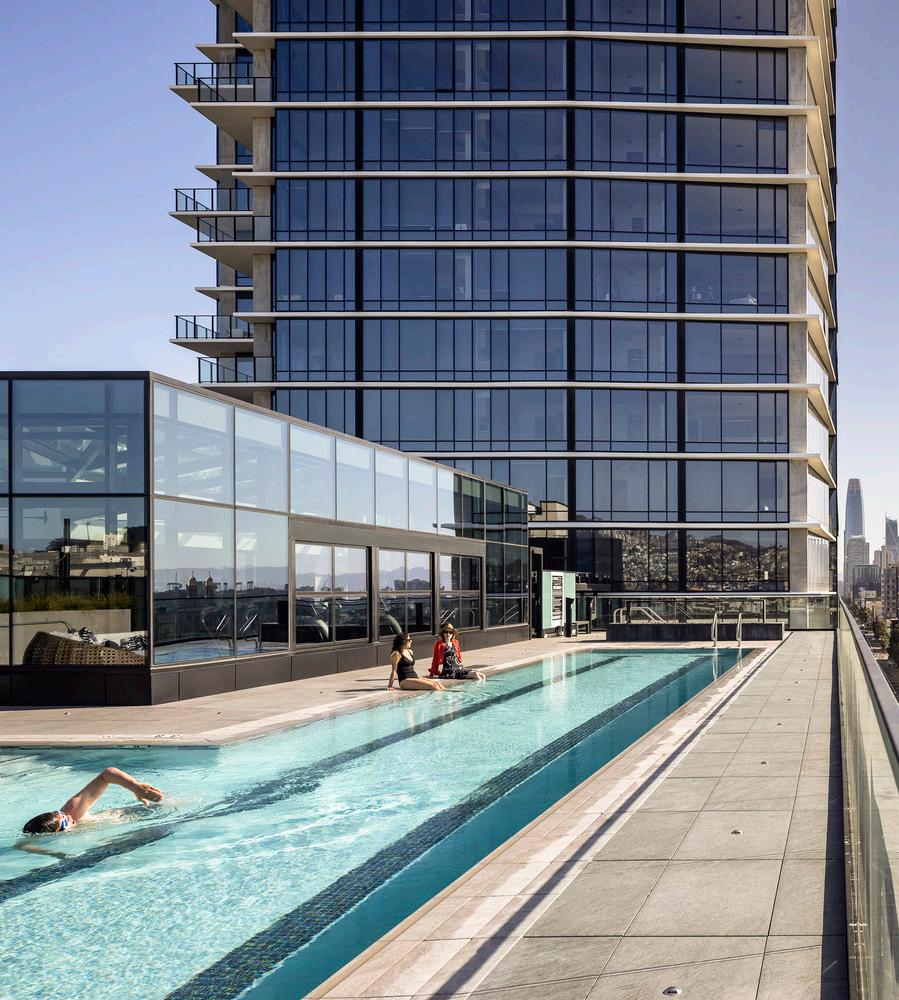
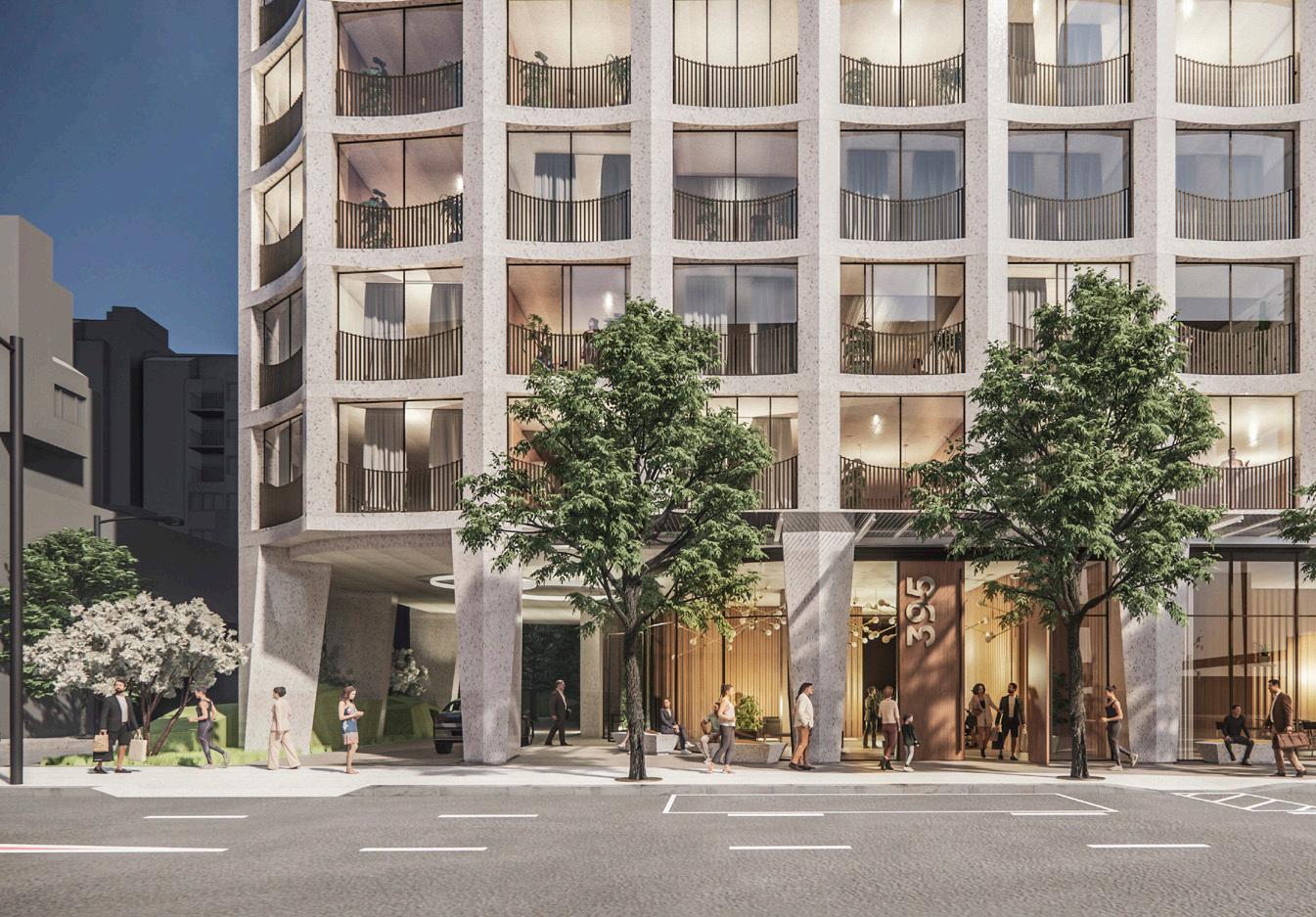
Urban Living with a Smaller Water Footprint
Chorus | San Francisco, CA LEED Gold
The onsite greywater reuse treatment at Chorus, a 467,000sq ft, 26-story luxury apartment building will recycle up to 2.9 million gallons of water annually. The recycled water will be used for toilet flushing, cooling systems, and landscape irrigation. Check out more details here.
395 Third Street | San Francisco, CA
The mixed-use housing development is designed to incorporate a 13,000 gallon per day greywater reuse system. With assistance from a SFPUC grant, the operational savings are estimated to be $110,000—$160,000 annually the first 5 years, with a return on investment within 5 years.
Health & Wellbeing
People spend approximately 90% of their time indoors, making indoor air quality critical to public health. Many toxic chemicals commonly found in building materials adversely impact our health and environment. These chemicals can be released into the air and water during the manufacturing, use, and disposal of building materials. These chemicals contaminate our environment and can be found in fish, birds, and microbial communities – the very food chain we depend on and consume.
West Ascension Early Learning Center | Donaldsonsville, LA Investment in Future Generations
The historic Lemann Building, once a key community and social hub for over 150 years, is an adaptive reuse project committed to its youngest community members—infancy until age 2. To foster positive change, the project was designed and built with 100% healthy materials (ranked green and yellow per Informed Healthy Product Guidance).
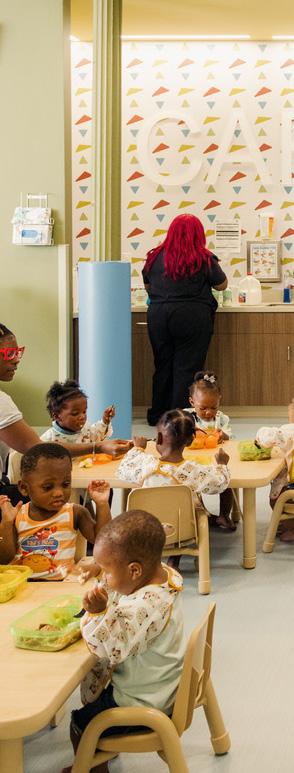
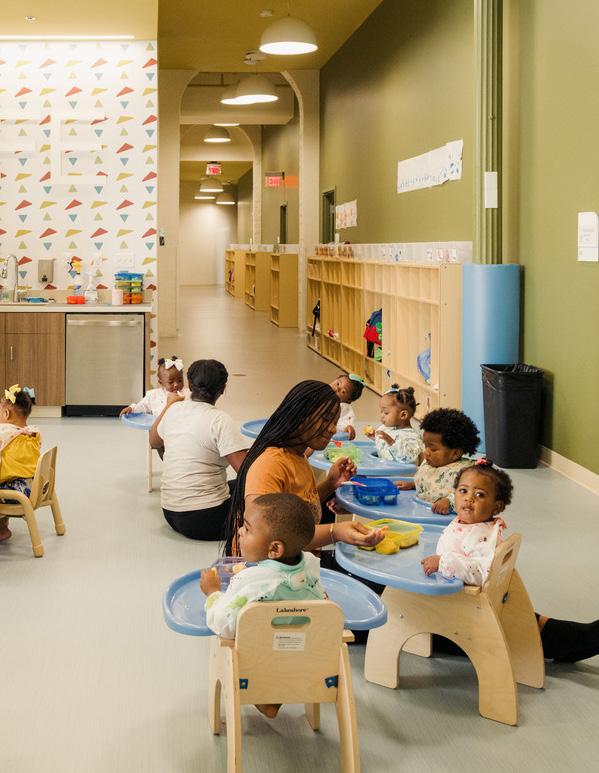
Portfolio / Health & Wellbeing
“Comparing the reported results of 2022 and 2023, the percentage of projects that performed healthy materials audits increased from 19.7% to 51.6%.”
Performance:
Healthy material initiatives aim to create healthy indoor environments for occupants and reduce the health burden on our frontline community and environment. The percentage of projects that performed healthy material audits based on Informed Product Guidance Red to Green Color Ranking System increased from 19.7% to 51.6%. 2023 reporting indicates that 67% of the material specified is green, 19% is orange, and 14% is red. The goal of our first year of benchmarking healthy material auditing was to strategically eliminate harmful material specifications for future projects.
2023 Healthy Material Specification, by Count
2023 Healthy Material Audit, by Project
Multistudio
Opportunities:
• Formaldehyde, volatile organic compounds (VOCs), phthalates, and chlorinated compounds like polyvinyl chloride (PVC) are hidden carcinogens and endocrine disruptors. Research shows that at elevated temperatures (35°C/95°F), VOC emissions from common building materials increase drastically compared to ambient temperatures (23°C/73°F). With rising extreme heat, eliminating toxic materials is critical to minimizing health risks.1 Specification of safer alternatives, like linoleum flooring, PVC-free resilient flooring, flooring bases, and window shades, helps reduce the public health burden.
• Per- and polyfluoroalkyl substances (PFAS) or “forever chemicals,” persist in the body and ecosystem for extended periods. Research estimates that PFASrelated diseases, including elevated cholesterol, liver disease, decreased fertility, and thyroid disorders, cost the U.S. $5.52 billion annually. Join us in advocating for manufacturers to test their products for PFAS and in specifying PFAS-free alternatives. Learn more at PFAS Central.
• Silicosis is prevalent among young workers in quartz countertop fabrication due to crystalline silica exposure. Our team prioritizes specifying low- or zerosilica countertops until safer formulations are available.
• Optimizing usable daylighting and views can reduce glare, solar heat gain, and reliance on artificial lighting and enhance productivity, mood, health, and well-being. Circadian rhythms—our internal 24-hour biological clocks—regulate physical, mental, and behavioral changes in response to light and darkness. However, spending 90% of our time indoors, with limited natural light and excessive screen exposure, can disrupt these rhythms, increasing the risk of obesity, metabolic disorders, cardiovascular disease, Alzheimer’s, and certain cancers.
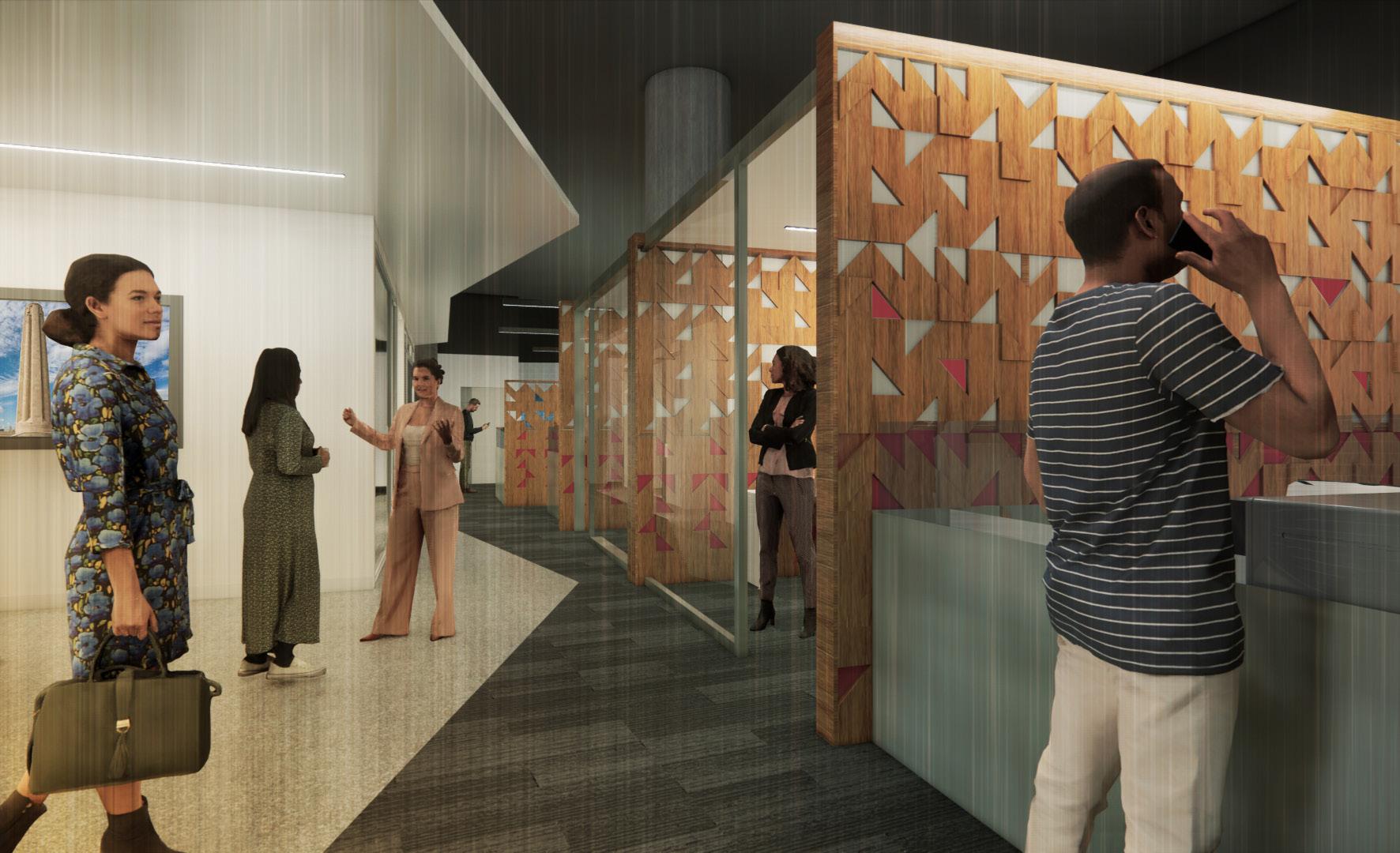
Confidential Workplace | Kansas City, MO
The renovation of the subterranean office space focuses on health and wellbeing with tunable circadian rhythm lighting that simulates natural daylight cycles, adjusting color temperature and intensity to support staff’s internal clocks. A large monitor displays live views of Kansas City from the museum’s hilltop camera, providing a virtual “window” to the outside world.
1 https://www.eurekalert.org/news-releases/1066354
Portfolio / Health & Wellbeing

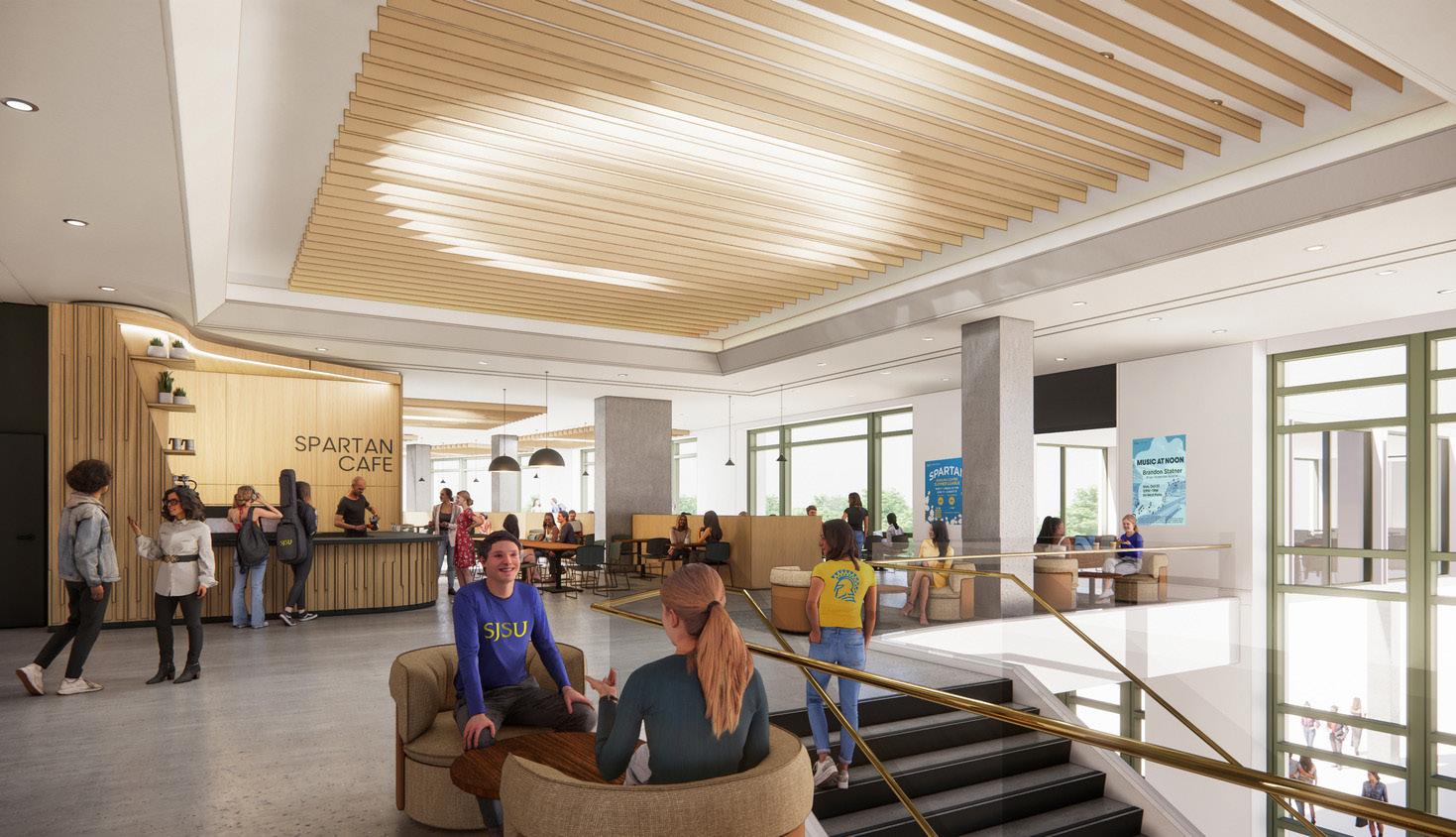
Hotel-to-Student Housing Prioritizing Well-Being
San José State University’s Spartan Village on the Paseo San José, CA
A hotel-to-student housing conversion for San José State University, Spartan Village student housing, provided 700+ beds and healthy amenities under one year to help alleviate the student housing shortage and avoided 11,770 metric tons of CO2e.
The design and construction team collaborated diligently to specify and install the red list free materials and finishes that meet durability and health department requirements: Zero VOC fiber reinforced panel (FRP), wood and concrete sealers, terrazzo, zero vinyl and zero PFAS upholstery and gymnastic flooring, and zero VOC commercial kitchen epoxy flooring. 38 of 40 project materials were red list free, ranked green and yellow per Informed product guidance. The goal was to provide a healthier workplace for construction workers as well as occupants.
The zero-vinyl gymnastic flooring and zero-VOC epoxy kitchen flooring specified on the project is being adapted to San José State University’s healthy materials standard.
Portfolio 2023
Embodied Carbon
Embodied Carbon represents carbon emissions released during the lifecycle of building materials, including extractions, manufacturing, transport, construction, and disposal. They account for 11% of global greenhouse gas (GHG) emissions.
Creating low embodied carbon designs for new construction, renovation, and material reuse will help minimize further carbon emissions and have a positive impact on climate change.
Rock Island Railroad Bridge | Kansas City, KS
Transformation of a defunct railway bridge to a public cultural and entertainment district reinvented a projected 1,200 tons of blight steel, or 2,532 tons of embodied carbon in use, which is equivalent to removing 603 gasoline-powered passenger vehicles off the road per year.
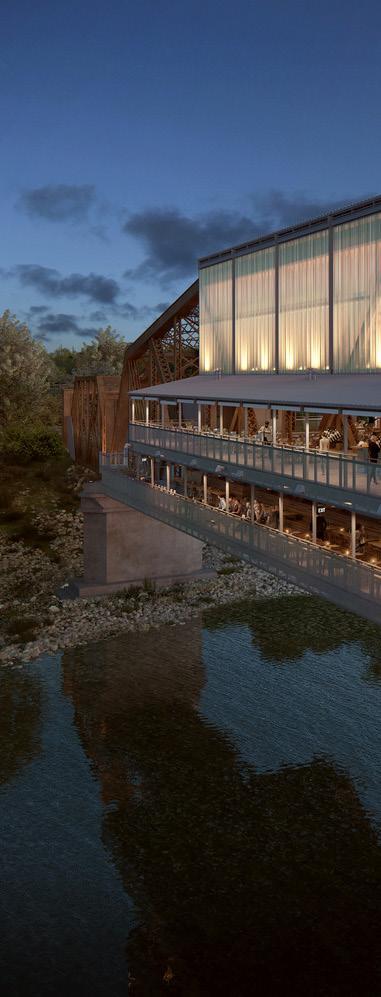
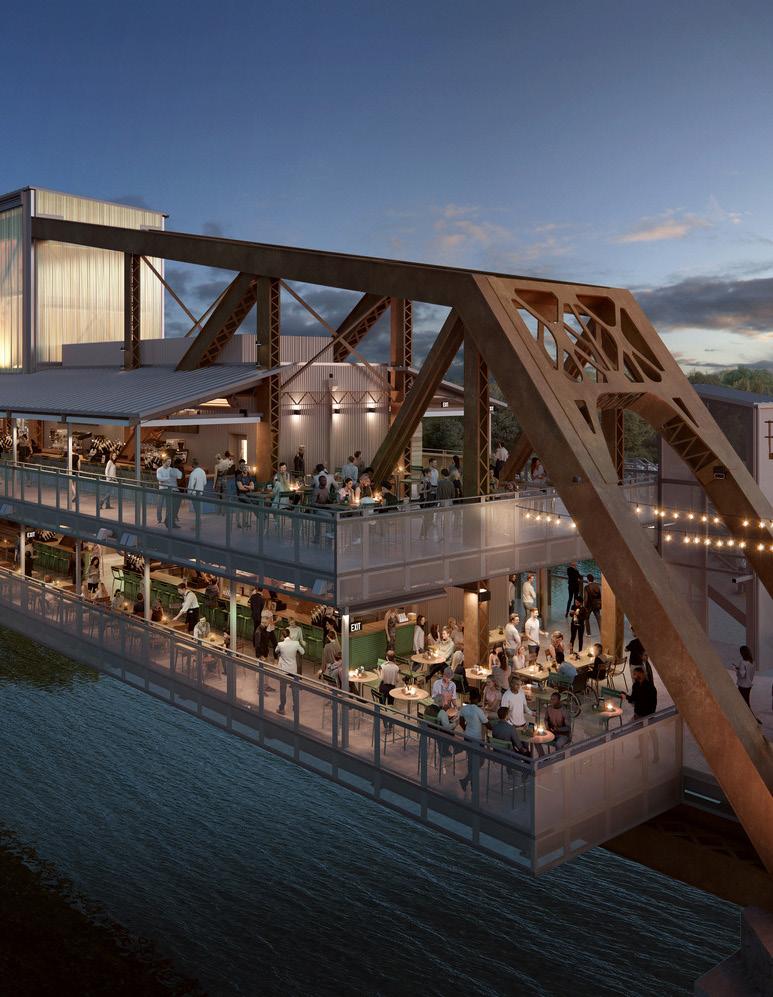
Portfolio / Embodied Carbon
“The accuracy of embodied carbon accounting results and reporting is still in it’s infancy, but we are pleased to see a significant increase in the percentage of our portfolio that reported embodied carbon accounting, rising from 13% in 2022 to 80% in 2023.”
Performance:
After the Carbon Smart Material Palette was launched in 2020 by Architecture 2030, Multistudio has researched and collaborated with consultants to implement low-embodied carbon construction strategies, including mass timber, cement substitute material specifications in concrete, steel with high recycled content, and electric arc furnace manufacturing.
Starting in 2022, we have invited carbon accounting creators from EPIC, CARE, tallyLCA, and tally CAT to give us annual tutorials on early design phase carbon estimation and Whole Building Life Cycle Assessment (WBLCA). The accuracy of embodied carbon accounting results and reporting is still in its infancy, but we are proud to see a huge leap from 13% to 80% of our portfolio (in GSF) reported embodied carbon accounting from 2022 and 2023.
Opportunities:
• Sustainable lightweight wood framing and mass timber are generally less energy-intensive and create buildings with less embodied carbon. In contrast, part of the biogenic carbon of the wood might be stored in the product. We encourage projects to require wood sourcing with FSC or FSI certification or disclosing the chain of custody of sustainable forest management.
• Setting embodied carbon reduction goals and strategies early for a concrete structure building with structural engineers, contractors, and cement suppliers is key. The foundation and vertical structure can be designed with a cement mix with higher cementitious substitute material (CSM) such as fly ash, slag, and others. Carbon Mineralization involves injecting recycled carbon dioxide into concrete during mixing, which reacts with calcium ions from cement to form calcium carbonate. This mineral becomes embedded in the concrete, making the concrete mix stronger. Demolished existing concrete can be crushed and reused as gravel or aggregate to make new concrete.
• In addition to advocating for building renovation and adaptive reuse to reduce the embodied carbon emissions in our built environment, designing with healthy, durable, and low-embodied carbon interior finishes is essential, especially for interior projects that might be refreshed and renovated frequently. Specifying waste diversion requirements and utilizing free take-back programs and highlighting them during construction meetings are other ways for the AEC industry to support a circular economy from demolition to the end of the life cycle.
• Steel and aluminum production creates 23% of the total global GHG emissions. US steel manufacturers led the way to create steel with over 90% recycled content by increasing scrap recycling and mass deployment of innovative technologies. By transitioning away from fossil fuels and utilizing electric arc furnace technology, steel manufacturers saw a 33% decrease in carbon emissions from traditional basic oxygen furnace production.
Portfolio / Embodied Carbon
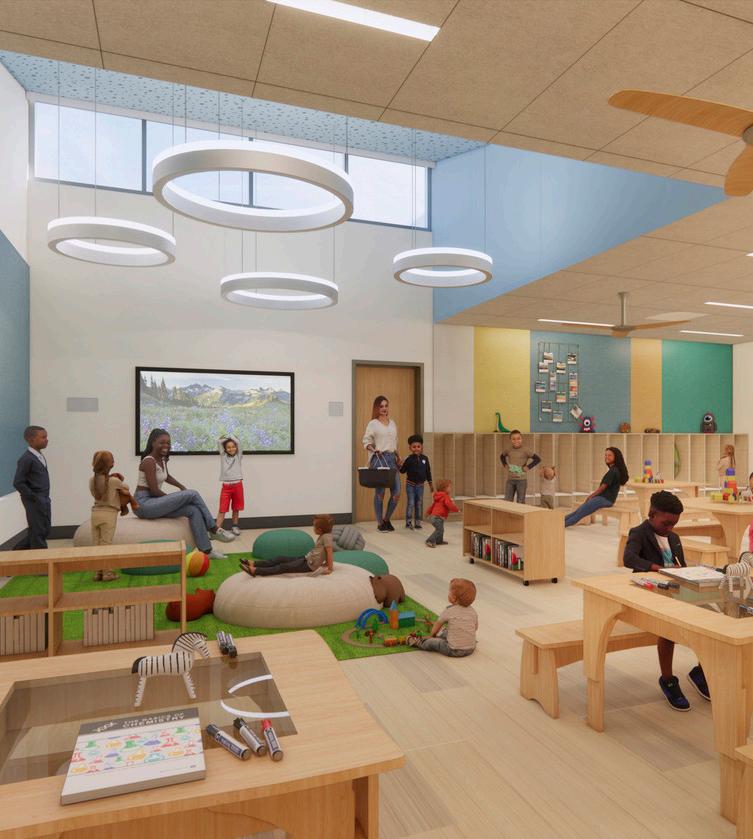
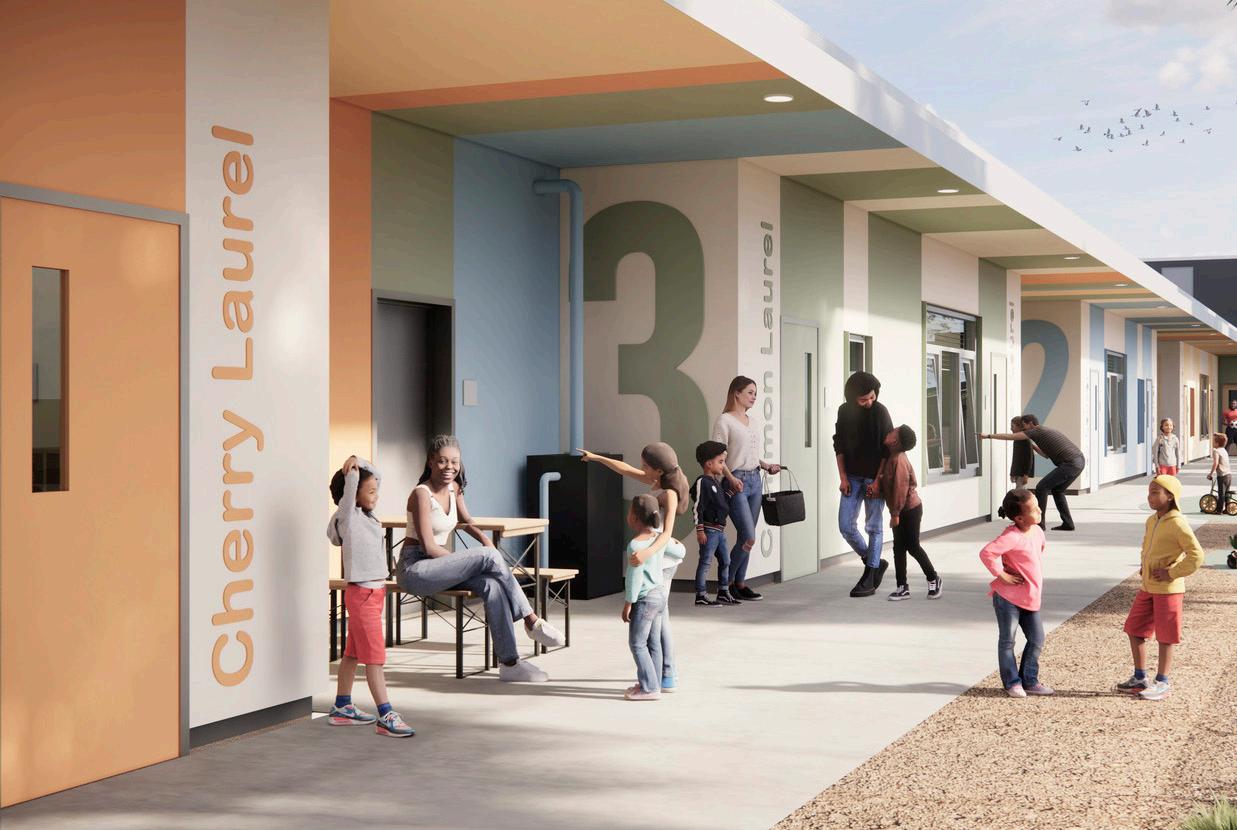
Investment in Zero Carbon Community Asset
Laurel Child Development Center | Oakland, CA
CHPS verifiable
The design of the Laurel Early Child Development Center is rooted in a vision of equity and sparking imagination and curiosity while fostering early ecological stewardship.
This all-electric, zero operating ready project incorporates materials with inherently low embodied carbon, including lightweight wood construction, a stucco facade, rice husk composite siding, and linoleum flooring.
The concrete supplier provided a mix containing slag cement at no additional cost, reducing the global warming potential (GWP) by 10–30% compared to the average concrete mix of equivalent strength, as outlined in the 2023 North American Material Baselines by the Carbon Leadership Forum.
Portfolio / Embodied Carbon
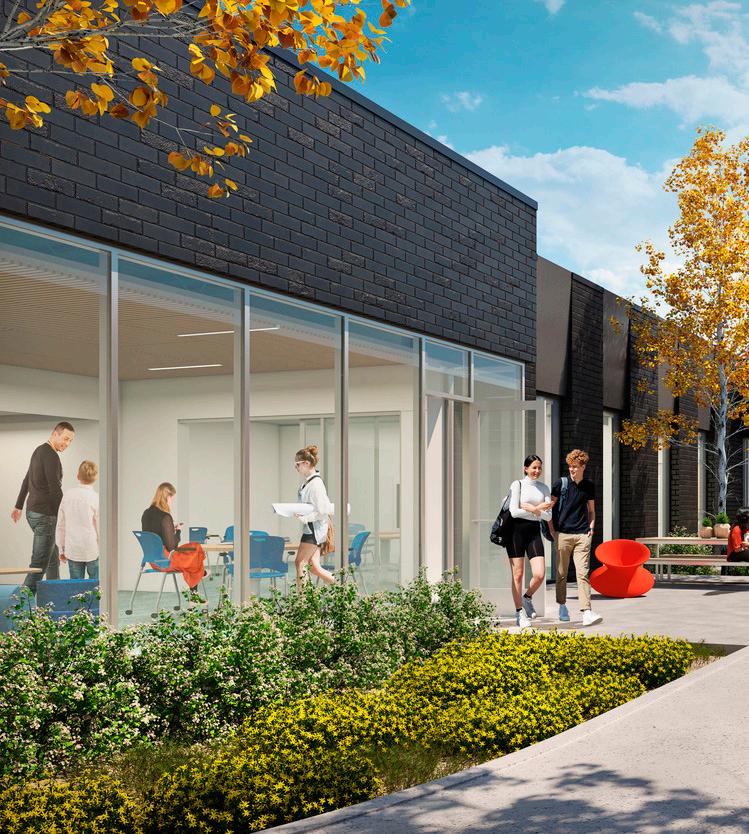
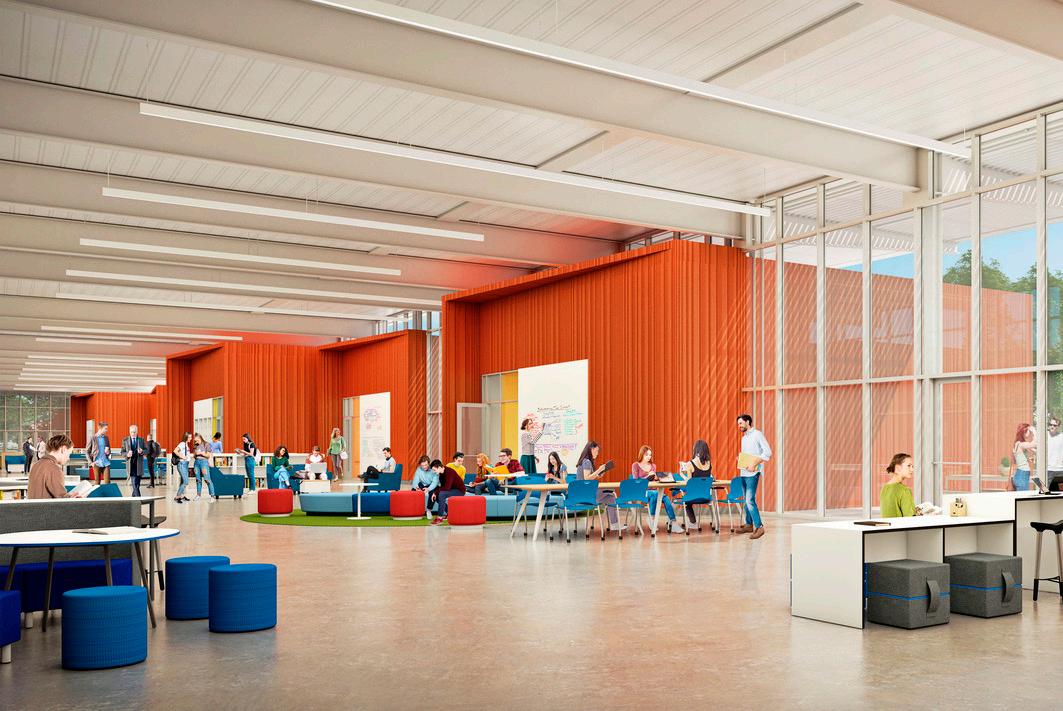
Learning and Lowering Carbon Footprint
Auburn Washburn School | Topeka, KS
The new middle school’s design focuses on supporting students’ socio-emotional needs by embodying a “learning happens everywhere” ethos. Design features such as the “Forest Walk” pay homage to the adjacent woods and creek while fostering a strong connection to the natural environment, creating spaces where students can feel connected to and inspired by their surroundings.
To lower the carbon footprint of this new school, the project was designed to reduce 60% of energy consumption and include solar-ready canopies to show off future renewable energy resources. It also utilized locally available lowembodied carbon steel joists and steel decking, made with 90% recycled content in an electrical furnace, which resulted in a 36% Global Warning Potential (GWP) reduction compared to the industry average.
Post Occupancy Evaluations
We conduct post-occupancy evaluations in collaboration with clients and end-users to assess not only building performance but also how spaces enhance and serve their communities.
Free State High School | Lawrence, KS
The Free State High School Learning Commons renovation project touched many parts of the school. Moving the library to the heart of the school was a primary goal. POE findings show an increase in Free State library utilization following the completion of the renovation. Student usage is up, as measured by both attendance and book circulation. Space observations and facility interviews agree, with notes indicating the variety of spaces are consistently being utilized throughout the day.
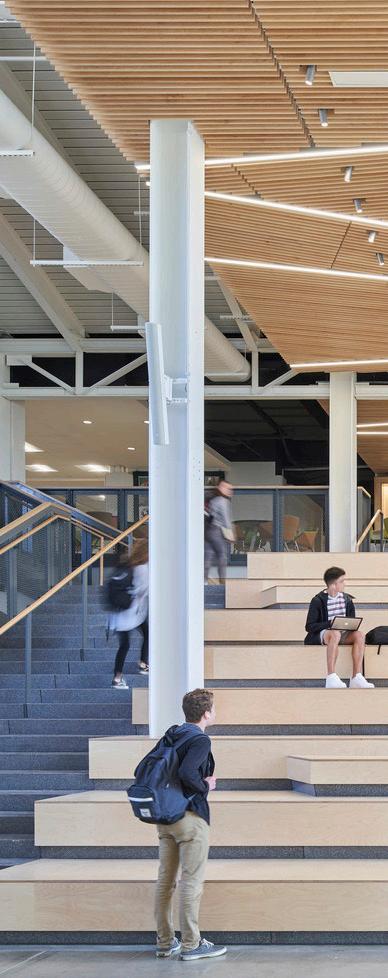
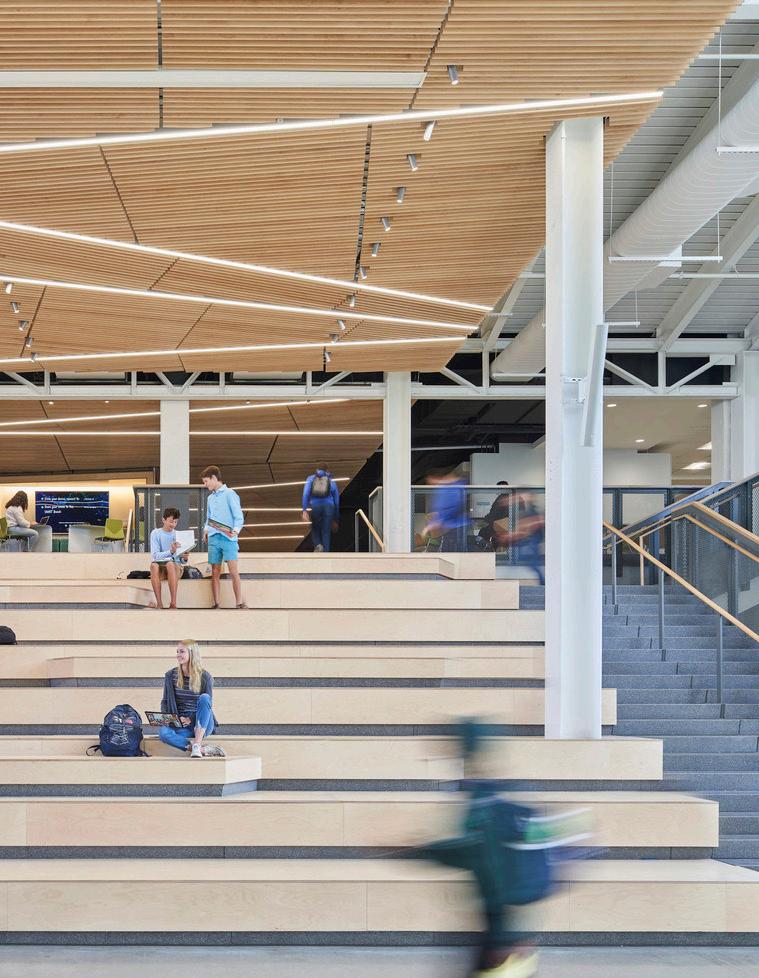
Portfolio / Post Occupancy Evaluations
Outlook:
Measuring and sharing the lessons learned and the impact of the project with the community embodies the core spirit of the ‘Design for Discovery’ design measure of the Framework for Design Excellence.
Through triangulated analysis of utility bills, surveys, and on-site measurements and observations, the evaluation can validate what design strategies result in positive outcomes as intended and are worth repeating for the next project. Findings can also recommend what outreach programs could be considered in helping end users for maximize the function of the space.
Performance:
In collaboration with Director of Research, Dr. Michael Ralph, several post occupancy evaluations were conducted to meet the building owner and operator’s needs. Findings were shared back to clients, occupants, and wider communities that shape the planning of each built environment.
Multistudio provided a comprehensive POE for the all-electric Manzanita Square, commissioned by the developer partner American Community College, which serves as a case study and template for future student housing POE initiatives. The POE scope includes building performance tracking of energy, water, and waste, satisfactory surveys for students, admin and, maintenance groups, as well as on site measurements including indoor air quality measurement.
Another POE conducted with Southeast Community College (SCC) looked at the performance of the new Academic Excellence Center (AEC) as a regional hub to bring together community members across the rural region served by the community college. The Center is filled with usable light and views to the campus landscape. Our findings showed 2 out of 3 students spend 1+ hours at the AEC, excluding class time, which was associated with increases in student sense of belonging and creativity. Importantly, we met our design goal of building connections with the surrounding community. 72% of students reported positive connections between the AEC and the Beatrice community where the campus is located.
Additional POEs from 2023 continued to yield insights into design excellence across Multistudio’s portfolio. A POE sponsored by the Brown Family Foundation in Kansas City showed the St. James Academy SPARK Center led to significant increases in ACT performance across the 3,200+ student visits in the 2022-2023 academic year.
Opportunities:
• Cleaner indoor air improves cognition, boosts productivity, reduces disease transmission, and mitigates asthma and allergy triggers. Multistudio advances indoor air quality by promoting zero on-site emissions and employing design strategies like tight building envelopes, MERV 13+ filters, Energy Recovery Ventilators (ERVs), and Dedicated Outdoor Air Systems (DOAS) to protect against smog and wildfire smoke.
• Behavior significantly influences indoor air quality. Many products, like perfumes, air fresheners, and cleaning agents, contain undisclosed toxic chemicals marketed as “trade secrets.” Chemicals such as phthalates, used to extend fragrance longevity, are linked to hormonal imbalances, ADHD, birth defects, and infertility. Educating residents and the public is vital to reducing exposure to these harmful substances.
• Key insights from Multistudio’s indoor air quality analysis (aligned with WELL v2.0):
1. Electric vs. Gas: CO2 and NO2 levels in all-electric units are significantly lower than in gas-fueled kitchens, underscoring the benefits of all-electric systems.
2. Pollutants: Elevated ozone and VOC levels were detected near a heavily used public printer. A separate printing room or closet with dedicated exhaust is highly recommended.
3. Wildfire Protection: MERV 13 filters effectively block PM10 particles but struggle with finer PM2.5 particles. Entrances without airlocks can allow wildfire smog to infiltrate buildings in California’s mild climate.
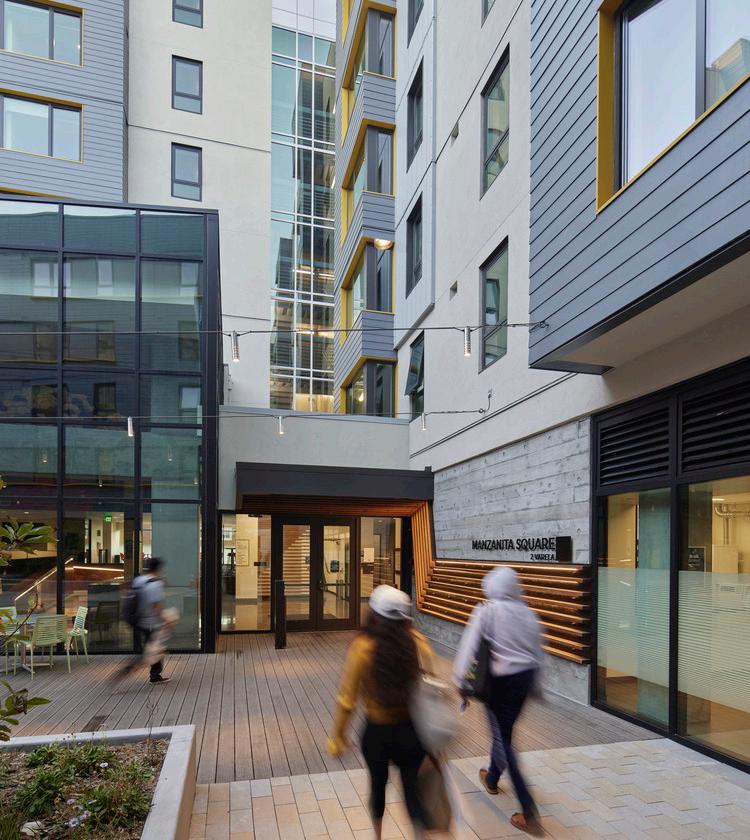
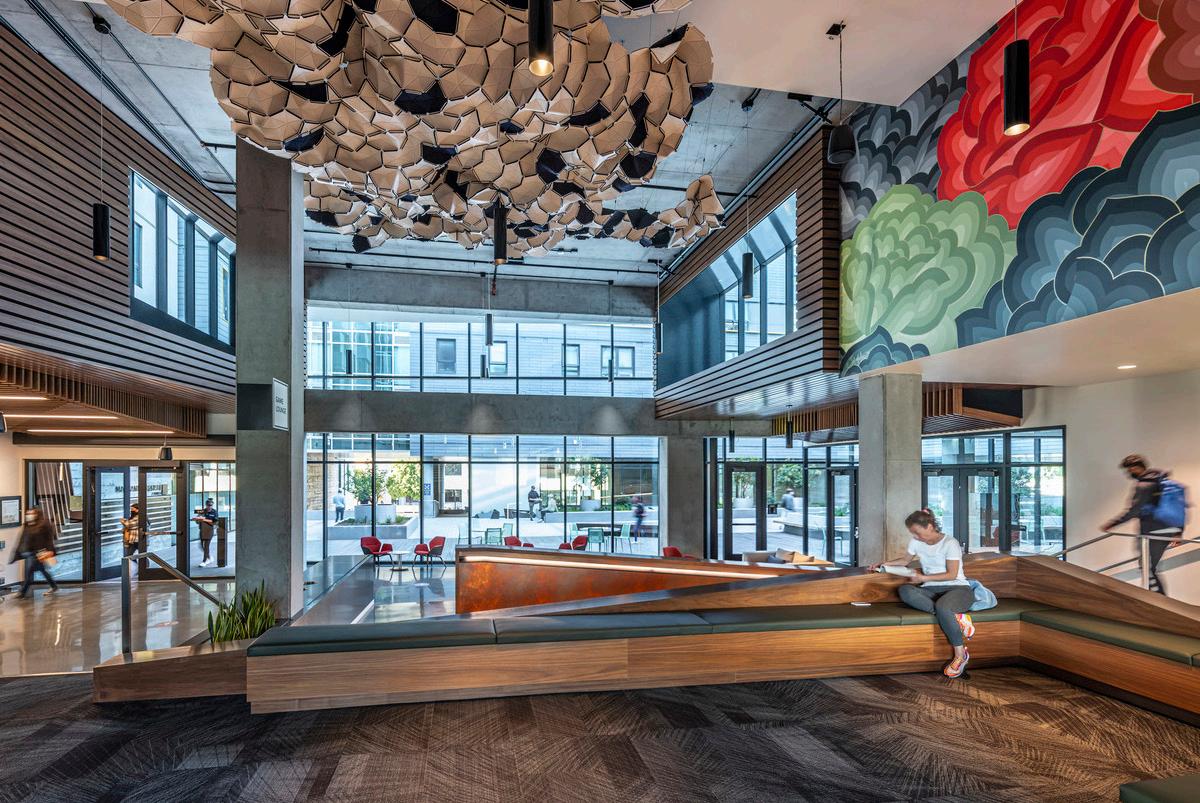
Measuring Building Performance and Its Impact
San Francisco State University’s
Manzanita Square | San Francisco, CA
LEED Gold
Capitalizing on the mild microclimate with a well-insulated envelope, natural ventilation with no mechanical cooling, and energy-efficient heat pumps, this all electric residence hall for San Francisco State University has an actual EUI 27% less than the predicted EUI. With cost-effective and water-efficient fixtures such as dual flush toilets and 1.8 gpm showers, average water usage per capita is 11 gallons per day, 72.5% less than the San Francisco average of 40 gallons. With well-located stairs with light, air, and joyful wall super graphics, residents below level five prioritized using the stairs rather than the elevators.
College residence hall experiences can be extremely transformative for young adults, shaping their healthy lifestyles and perhaps bringing those healthy habits to future workplaces and their own families.
Operations
Facing the urgent need to limit global warming by 1.5 °C and mitigate the effects of climate change, Multistudio is proud to walk the talk and lead the environmentally responsible effort through carbon accounting and offset. Similar to how we track the building performance of our design, we track, reduce, and offset our operational carbon footprint.
Multistudio joined the AIA Large Firm Roundtable Pledge for carbon accounting and offset starting in 2023. Following guidelines from the US Environmental Protection Agency Center for Corporate Climate Leadership, Multistudio conducted carbon accounting, including:
• Scope 1 (direct emissions associated with fuel combustion in boilers or furnaces),
• Scope 2 (indirect emissions associated with the purchase of electricity),
• Scope 3 (Business travel-only for year 1). The collective pledge is to increase carbon accounting scope incrementally each year, eventually achieving comprehensive accounting.
Through the collaboration of our accounting, office administrators, and sustainability teams, the total reported carbon emissions for the year 2023 were 303.8 tons. Carbon emissions were dominated by studios’ electricity usage and business travel by air. We are fully committed to accounting, reducing and offsetting all carbon emission by 2030.
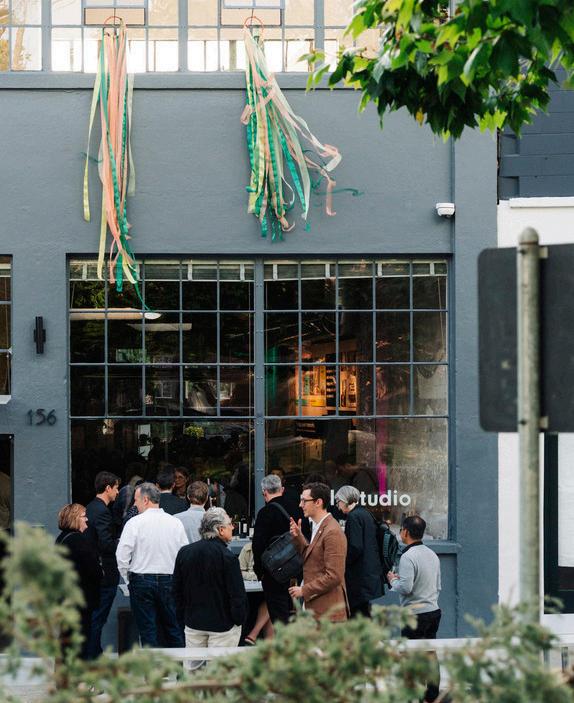
Multistudio | San Francisco, CA
Operational Carbon Accounting
Our first steps as Multistudio
Exploring Carbon Offset
To align with our decarbonization mission, we formed a small steering committee to evaluate our carbon offset. We engaged the third-party digital carbon market firm, Cloverly, who offers expertise in pre-vetting the quality of carbon credits through additionality, permanence, verifiability, and co-benefits. The small committee collectively agreed to allocate more dollars to carbon removal strategies rather than carbon avoidance credits to our portfolio. As a result, we contribute indirectly to accelerate decarbonization technology that will eventually be more affordable and accessible for all. Our carbon credit portfolio is in alignment with Carbon Drawdown solutions and our multi-disciplinary design approach: Refrigerant management and low-embodied carbon concrete that minimizes the carbon footprint of our built environment, biochar that enriches our soil, and forest restoration to promote biodiverse ecosystems.
Tracking and Decarbonizing
As of February 2024, our newly renovated all-electric San Francisco studio has been powered by 100% renewable energy offsite to reach zero operating carbon for scopes 1 and 2. Our Phoenix studio is also 100% all electric, with a power grid that is committed to reaching clean energy by 2050. We also installed electricity monitoring systems in our studio locations for more accurate accounting.
Business Travel
In-person connections and collaboration are highly valuable; we encourage employees to elect lowcarbon emission ride share options, carpool, transit, and direct flights for long distance business travel whenever possible. For 2024 accounting, we plan to include commuting. For local business travel, Phoenix Studio offers studio bikes, while San Francisco offers studio helmets and encourages using the citywide bike share program if a personal bike isn’t available.
Looking Ahead: Water Use
We will also embark on a new journey of benchmarking our firmwide water usage. We are actively reducing water usage by installing ultra-lowflush toilets in the Lawrence and NOLA studios. We believe in a water-energy nexus: if we save water, we save energy and carbon emissions.
2023 Carbon Accounting
Scope 1 — Direct Emissions
Gas: 0.7 MtCO2e
Scope 2 — Indirect Emissions Electricity: 162.0 MtCO2e
Scope 3 — Indirect Emissions: Business Travel Only
Air Travel: 94.9 MtCO2e
Car Travel: 46.1 MtCO2e
2023 Carbon Offset
People
To cultivate a sustainable design culture, you must actively invest in it and steward it alongside your daily work.
Leadership
As Multistudio rebranded from Gould Evans in the spring of 2022, the firm invested in creating the first resource to holistically embrace sustainability in our culture, operations, and design work: Teresa Jan, Associate Principal in San Francisco, was designated the Director of Climate Positive Design. Together with the Sustainability Committee, they strategize pathways from “doing” sustainable design to “being” at the heart of climate work.
Betsy Lynch, AIA and Associate Principal, recently became Multistudio’s first Sustainability Strategist, to elevate goals both locally in the Phoenix Studio, as well as firmwide initiatives.
Multistudio Sustainability Committee
The Sustainability Committee, formally organized in 2017 by architecture and interior sustainable leads from different studios, has now been broadened to emphasize the multidisciplinary collaborative approach towards sustainability from city design, urban design, landscape to branding, and graphic design. The committee meets monthly to build consensus and launch initiatives internally. Small task force groups are formed to tackle topics such as healthy materials or carbon offsets, roll out internal resources, and facilitate Design Excellence charrettes and follow-ups. Each year, Sustainability Committee members provide input on conference budgeting in November and apply for approved sustainable conferences in January.
In 2023, members also attended the International Mass Timber Conference, Greenbuild, and the Living Future Unconference, sharing valuable insights from these events with the committee members and integrating in design practices.
Firm Resources
The Multistudio Director of Climate Positive Design and Sustainability Committee cultivate a sustainable learning ecosystem with the following resources and benefits:
• All new employees are greeted by the local studio Sustainability Committee members and Director of Climate Positive Design and onboarded with the firmwide commitment and resources.
• Online lunch and learns with guest experts cover a range of topics from healthy material, low embodied carbon, and water reuse for firmwide continuing education.
• Monthly synchronized “10-minute Sustainability Discussions” review basic benefits, strategies, and tools of each design measure from the AIA Framework of Design and Excellence.
• Sustainable design credential resources, including study, exam time and annual registration fees, are provided. “Freeway Rethink: Burying Hospital Curve and Removing the Central Freeway” Panel Discussion, SPUR | San Francisco,CA
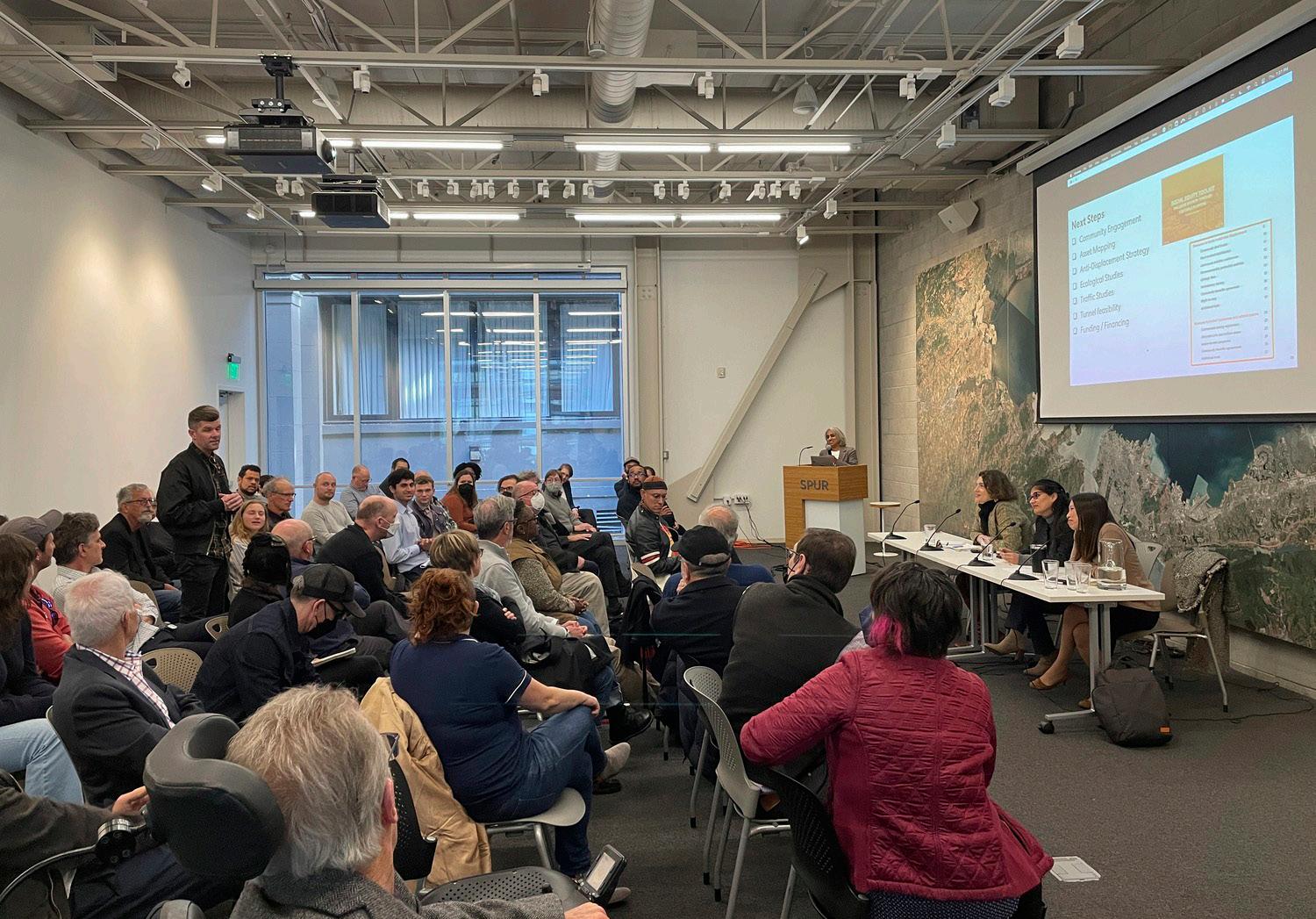
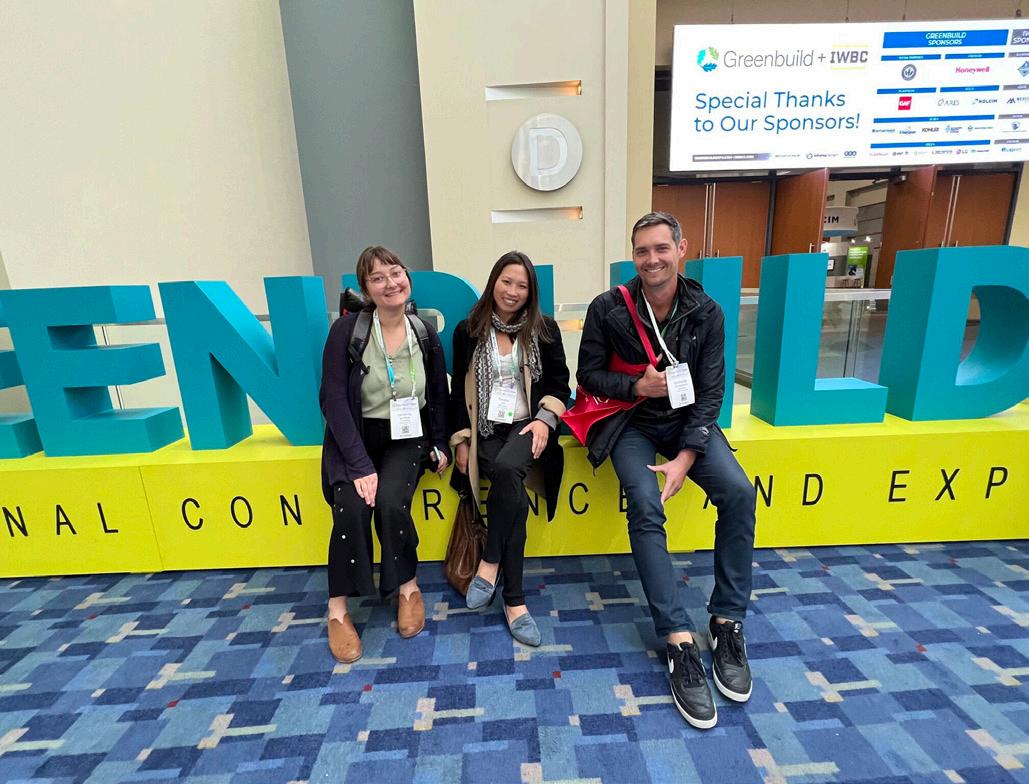
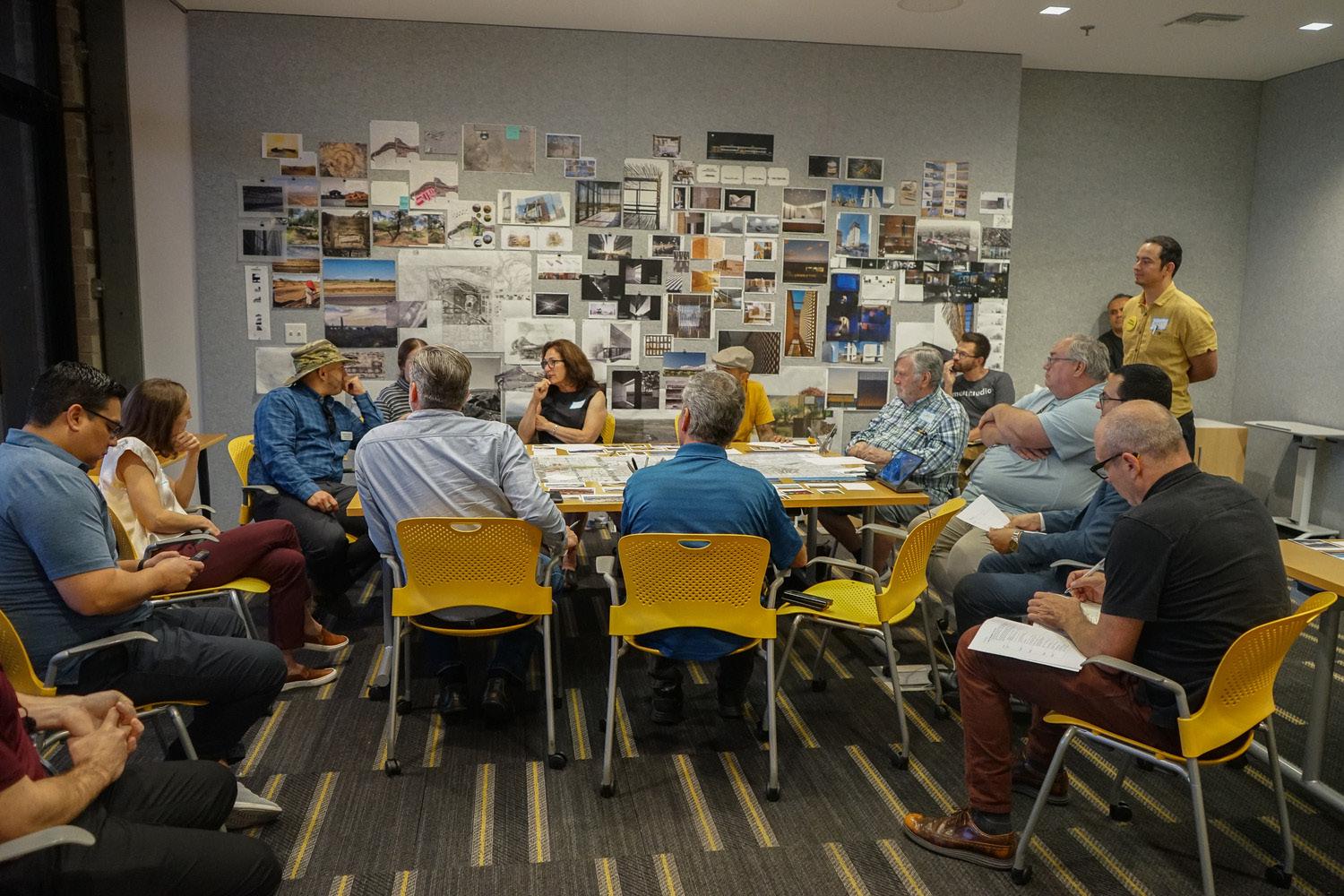
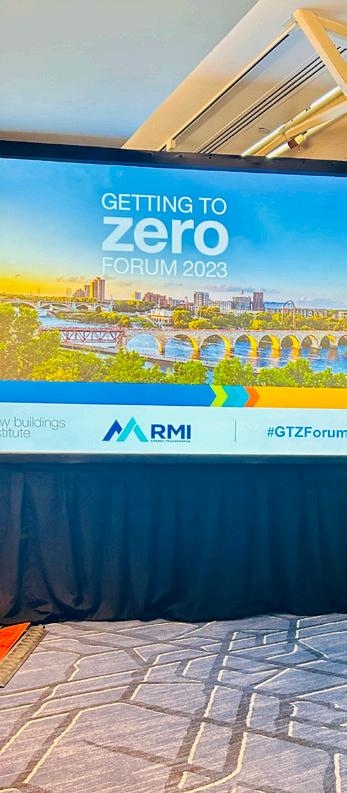
In Our Communities
“What if we can get it right? Why would we not try?”*
Many Multistudio colleagues have actively contributed their sustainable design expertise and care deeply for their community, championing environmental equity, biodiversity, and decarbonization in their regions.
By facilitating discussions and sharing insights and case studies, Multistudio contributes to the broader discourse on the crucial and unique position we design professionals can play in imagining a new sustainable and equitable future.
• Multiple sustainability team members Betsy Lynch, Ian Colburn, Lance Dickman, and Teresa Jan are active in local and state chapters of American Institute of Architect Committee on the Environment (AIACOTE) and Carbon Leadership Forum Hub
• As a former co-chair of the AIAKC Advocacy Committee, Sam Lorie advanced Kansas City’s early adoption of the 2021 IECC and co-founded City Hall Day to engage council members on energy codes, housing affordability, and project delivery. He continues to remain active as a member.
• Galen Lif serves on the Health and Well-being Study Group for the AIA Strategic Council to advance awareness, knowledge, and application towards designing healthier buildings and communities through multiple means.
*Ayana Elizabeth Johnson, closing keynote speaker at Greenbuild 2023
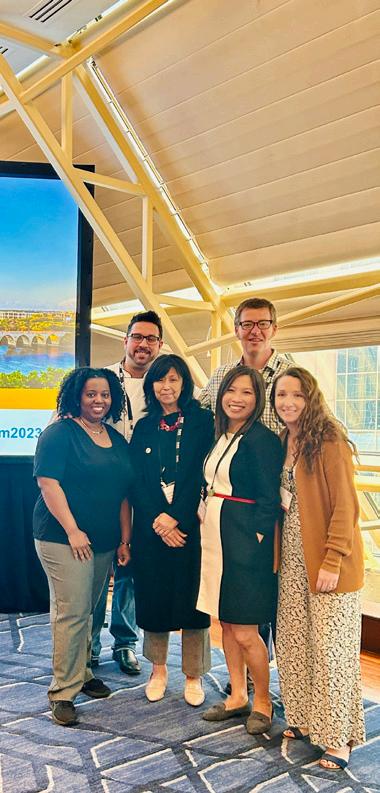
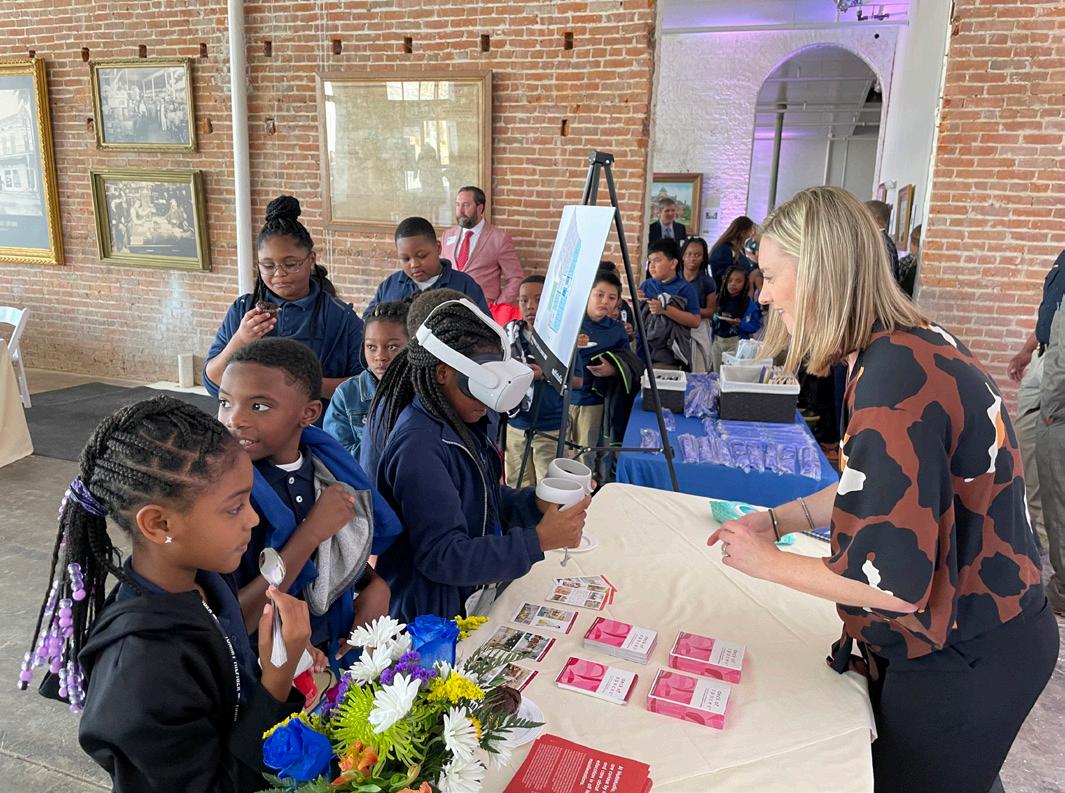
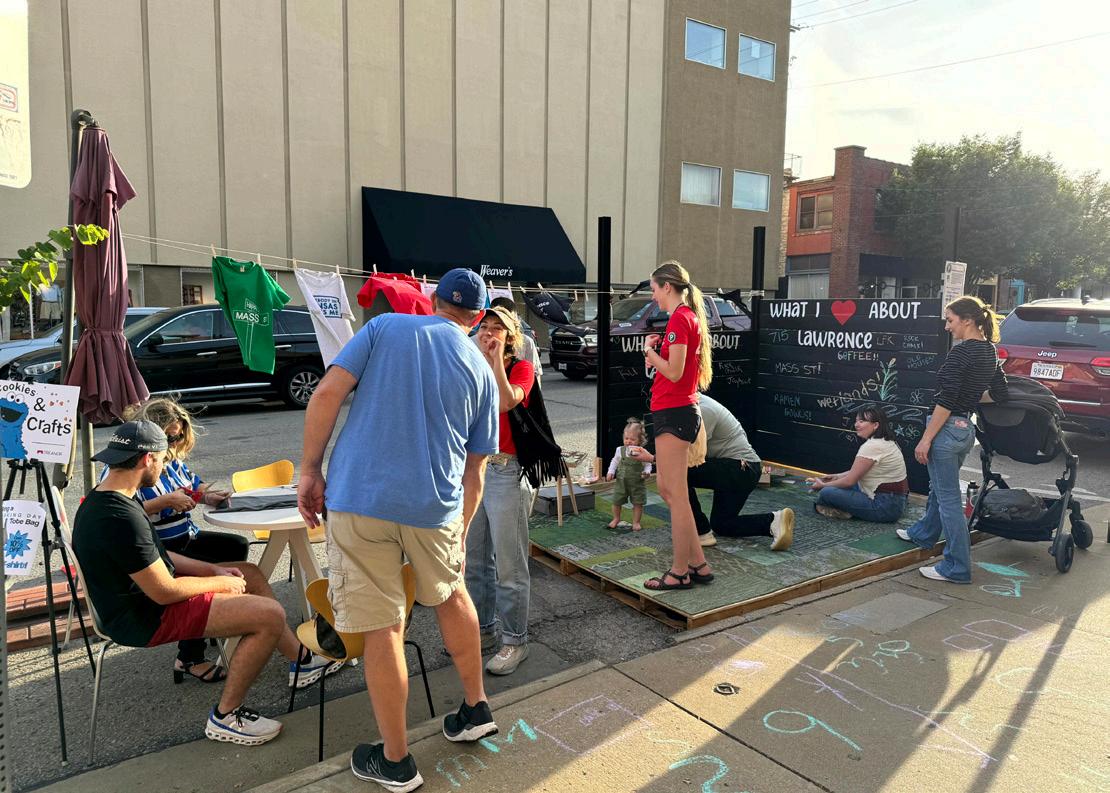
• Betsy Lynch is an active member of the Rio Reimagined Partnership in Arizona, a non-profit organization in collaboration with Arizona State University working to realize the revitalization of 55 miles of the Salt River that runs through six municipalities and two Native American Communities.
• Ian Colburn joined the SPUR San José’s downtown master planning steering committee in 2023. He participated in a workshop with the City of San José, employers, community groups, designers, and civic leaders that focused on developing an implementation agenda for revitalizing downtown San José.
• Robert Whitman was featured on Kansas Public Radio for his expertise in diversifying tree species through making a tree list for the Kansas City Region to promote biodiversity, resiliency, and native plants.
• The Douglas County Food Policy Council aims to foster a sustainable and successful local food system in Douglas County, Kansas. Tyler Lindquist serves as Chair and leads the Council’s economic development working group.
• Steve Vukelich and Ethan Dorning collaborated with students at Lawrence Limestone Community School to teach them about architecture, sustainability, and affordable housing. What started as a thought experiment evolved into a real affordable housing project in partnership with the nonprofit Tenants to Homeowners, providing a home for a family overcoming housing or financial challenges.
• During a bike ride through “Cancer Alley” with the Louisiana Bucket Brigade, Cassidy Rosen connected with Ashley Gaignard, CEO of Rural Roots Louisiana, to create a fundraising package for a youth community garden in Donaldsonville that empowers youth through regenerative practices.
• Teresa Jan was featured on KPBS’s Freeway Exit podcast, discussing Multistudio’s collaborative advocacy for rethinking the Central Freeway. She co-leads studio-wide efforts with Bob Baum, Luca Giaramidaro, Britt Tennell, and other community and design collaborators to engage the community and build a coalition to reconnect neighborhoods divided by the freeway.
• Honored to serve as a 2023 AIA Architecture and Twenty-Five Year Award juror, Teresa Jan contributed to rigorous design debates. She also presented at the AIA National Conference, EDRA, and Getting to Zero Forum, sharing insights on equitable engagement and decarbonized design.
• Park(ing) Day is a global event reclaiming public space to inspire creativity and explore urban ecology. On September 27, 2023, after a five-year hiatus, Multistudio, in partnership with Hoke Ley Architects, hosted 2023 Lawrence Park(ing) Day. Six installations, created by downtown businesses and community partners, attracted an estimated 850 visitors along the Downtown Lawrence corridor.
Photos above (left to right): 2023 Greenbuild International Conference + Expo, Washington DC; Rio Reimagined Partnership, Phoenix, AZ; 2023 Getting to Zero Forum, Minneapolis, MN; Smart Start, New Orleans, LA; 2023 Parking Day, Lawrence, KS
Sustainability Committee Members
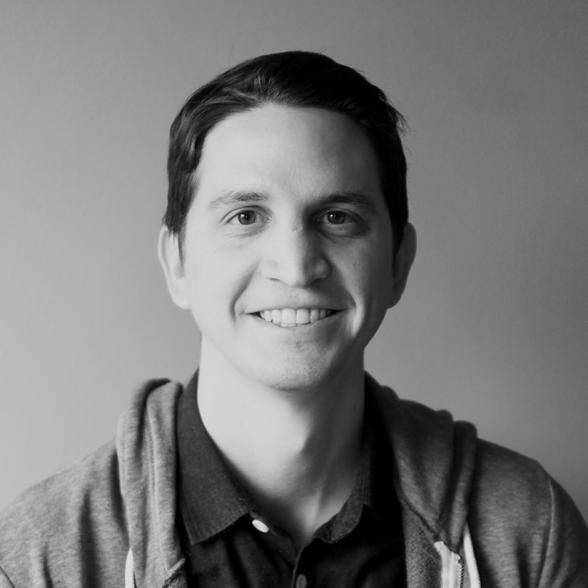

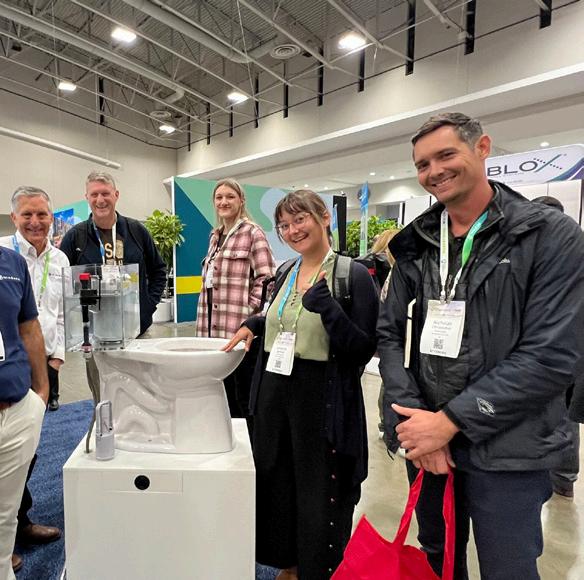



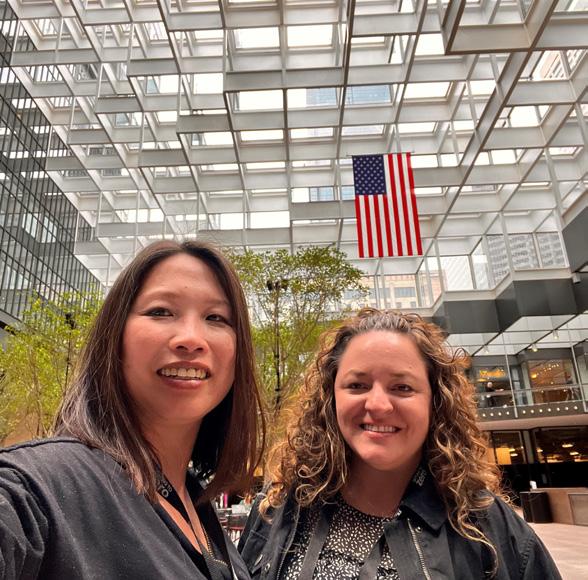
Getting to Zero Forum 2023
Minneapolis
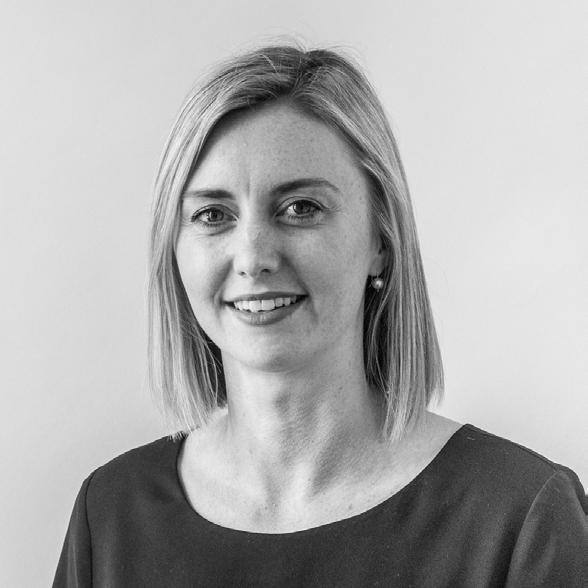

Steve Vukelich
Teresa Jan
Damon Baltuska
Mark Kramer
Matt Bone Greenbuild 2023 Washington DC
Lexi Tengco
Nate Gradoville
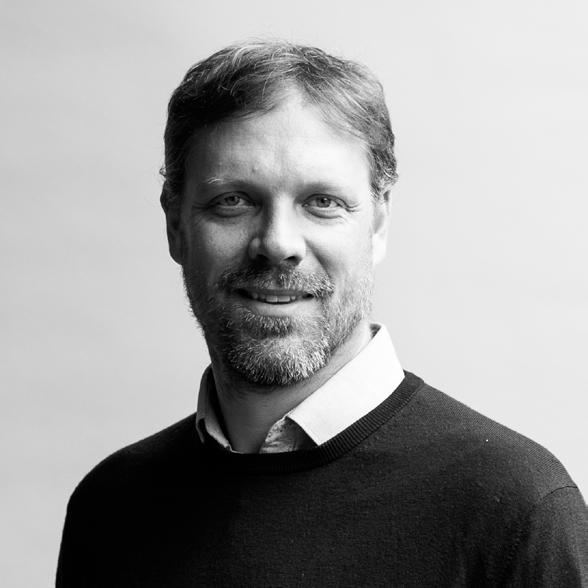
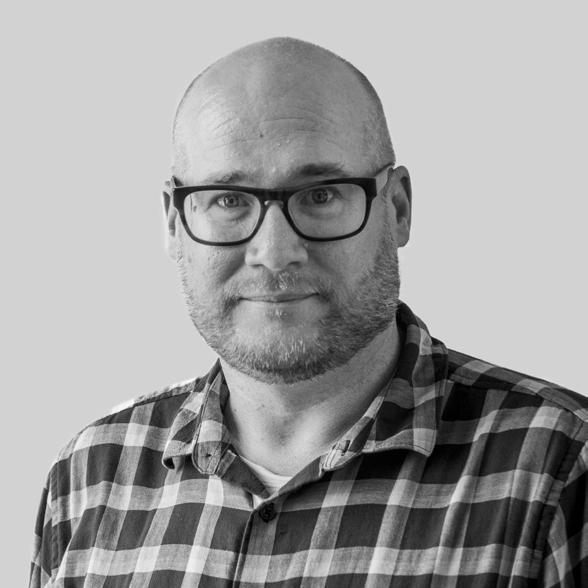
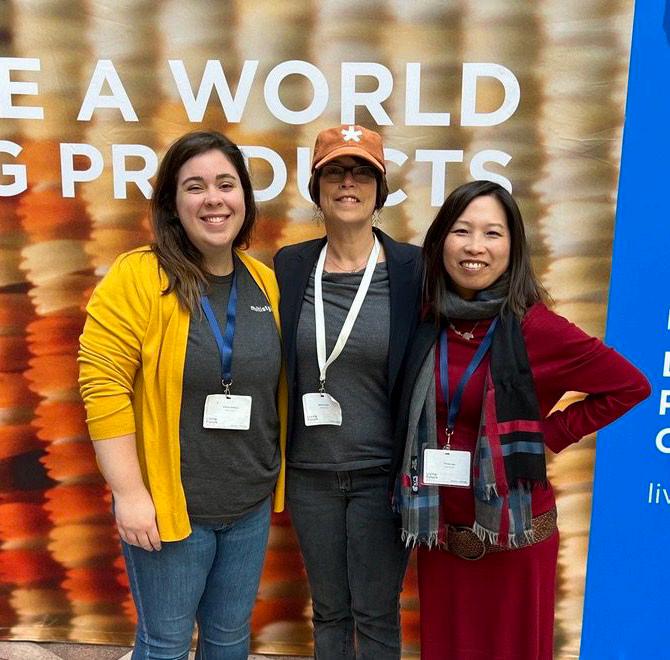

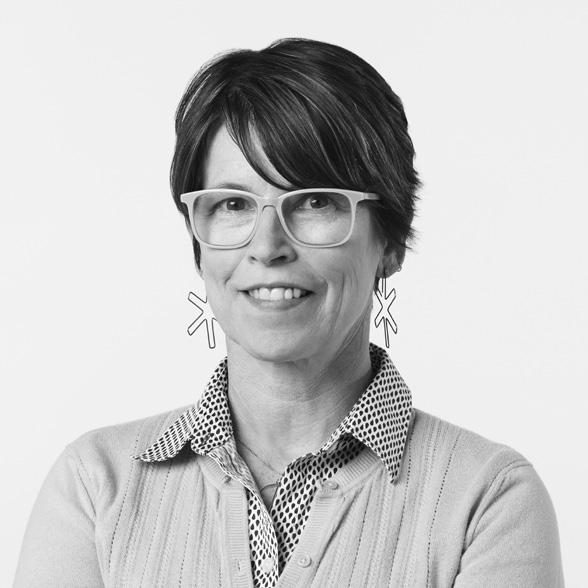
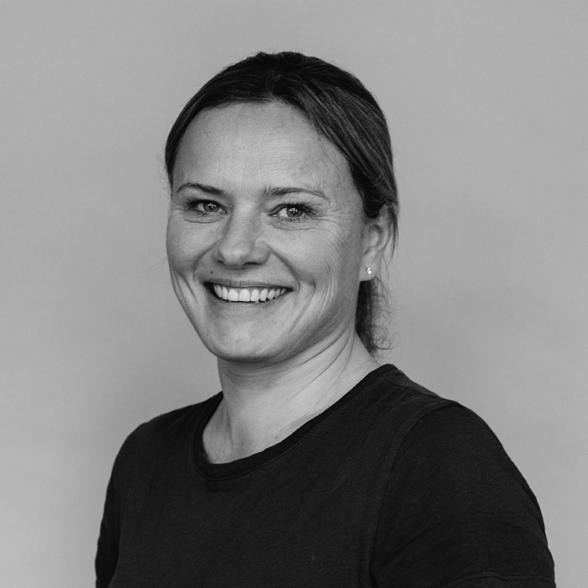
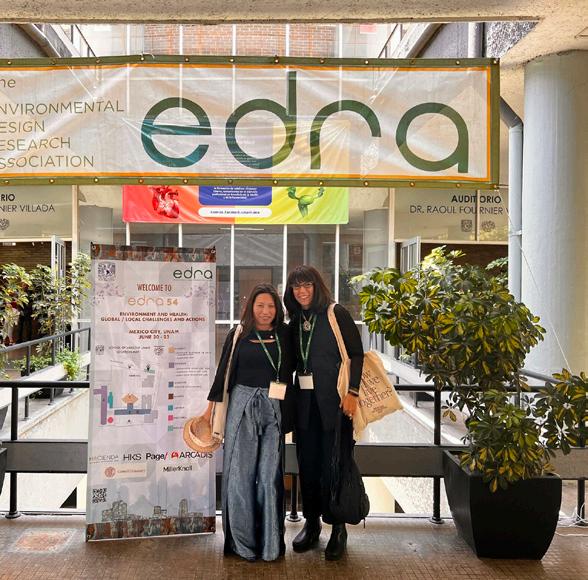
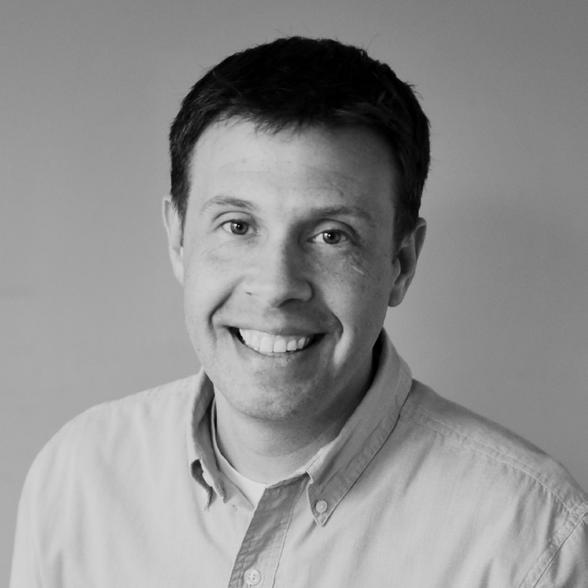
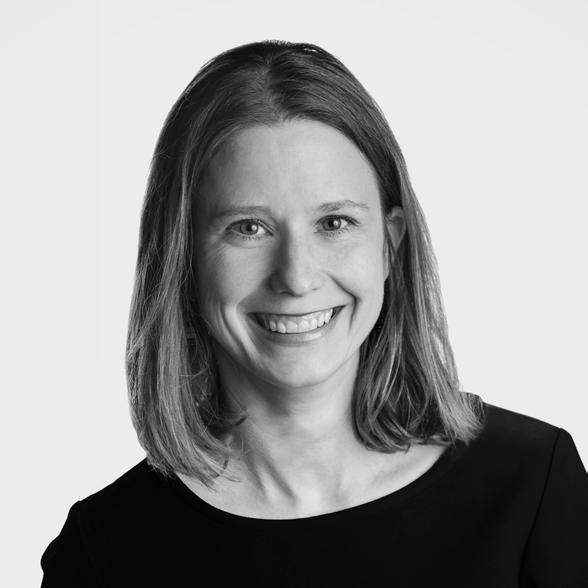
EDRA 54 Mexico City
Sam Loring
Robert Whitman
Sally Wurtzler
Amy Nicholson
Betsy Lynch
Ian Colburn Living Future 2023
Washington DC
Lance Dickman
Teresa Jan, AIA, LEED AP, WELL AP Director of Climate Positive Design
Teresa.Jan@Multi.Studio
415.844.2138
Betsy Lynch, AIA, LEED AP Sustainability Strategist
Betsy.Lynch@Multi.Studio
602.650.7632
Explore possibilities with us.
www.multi.studio
